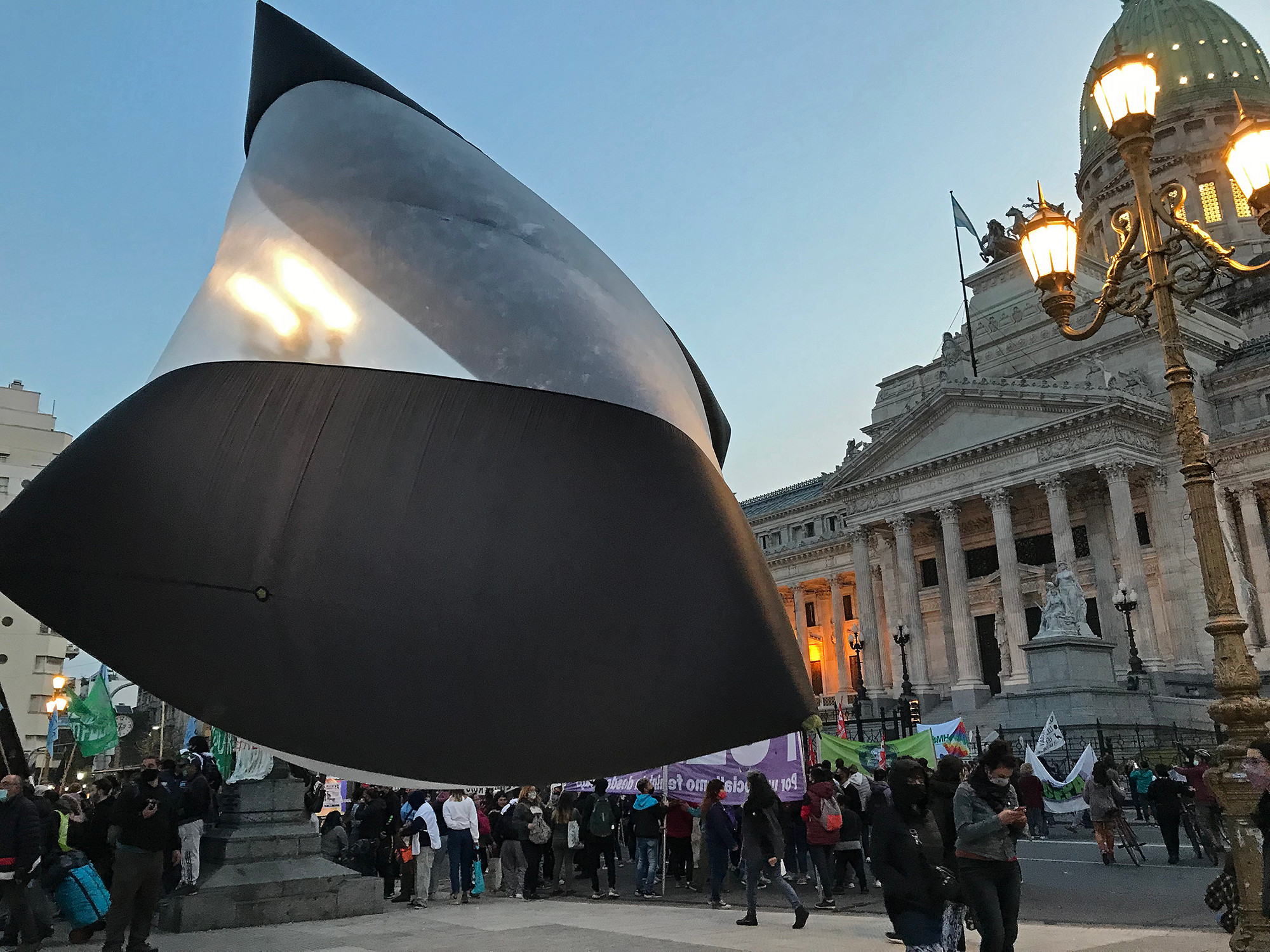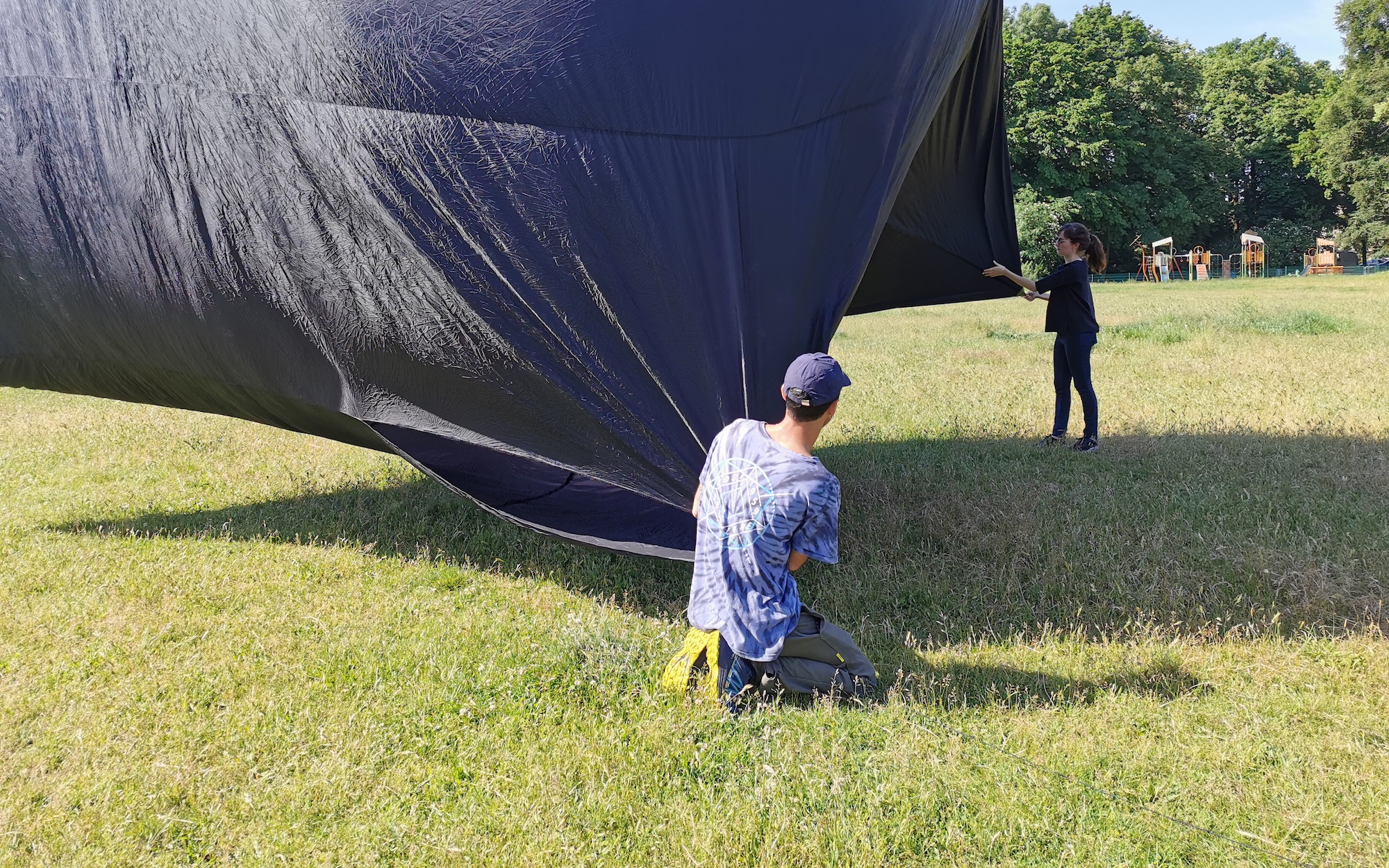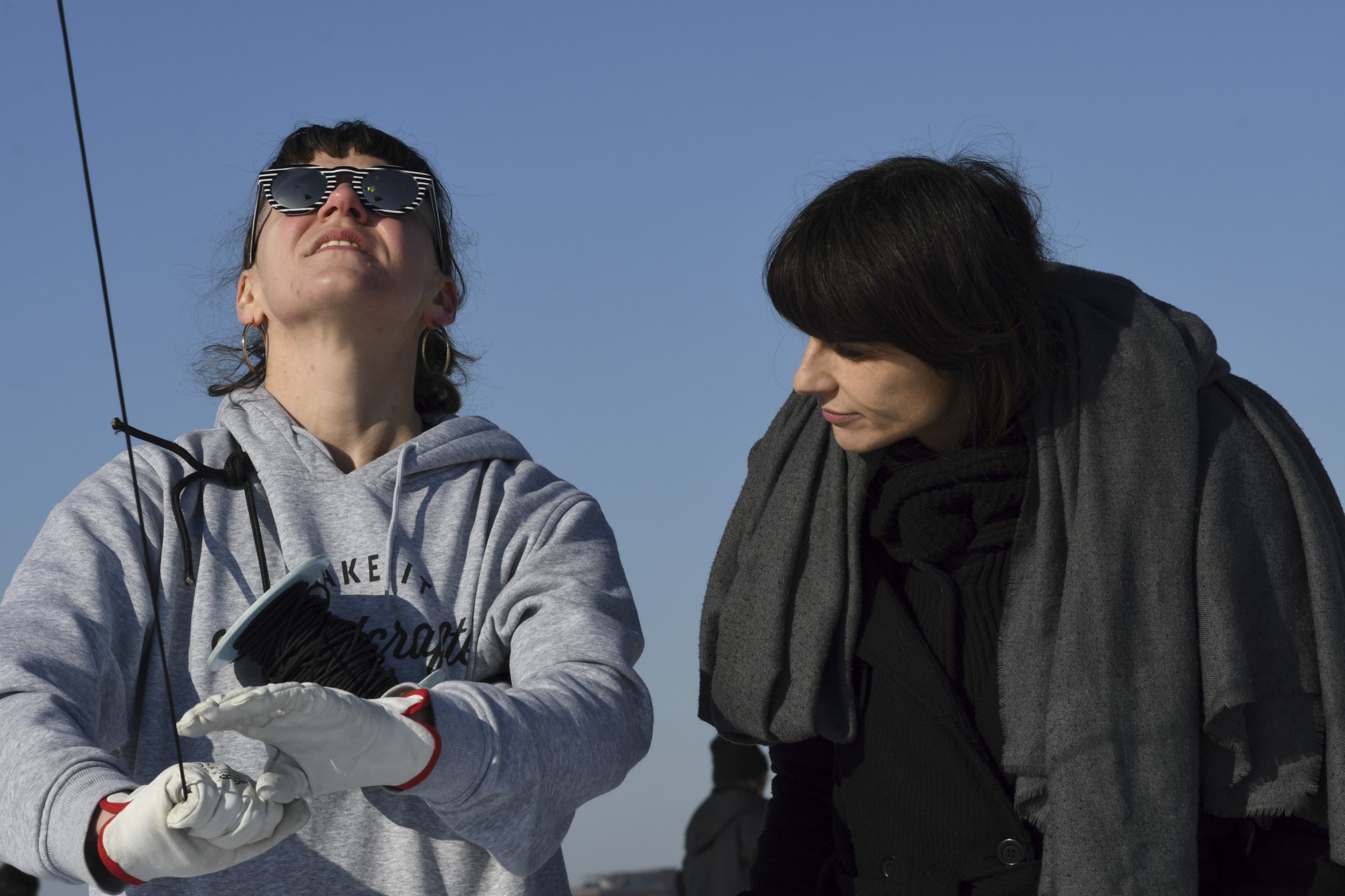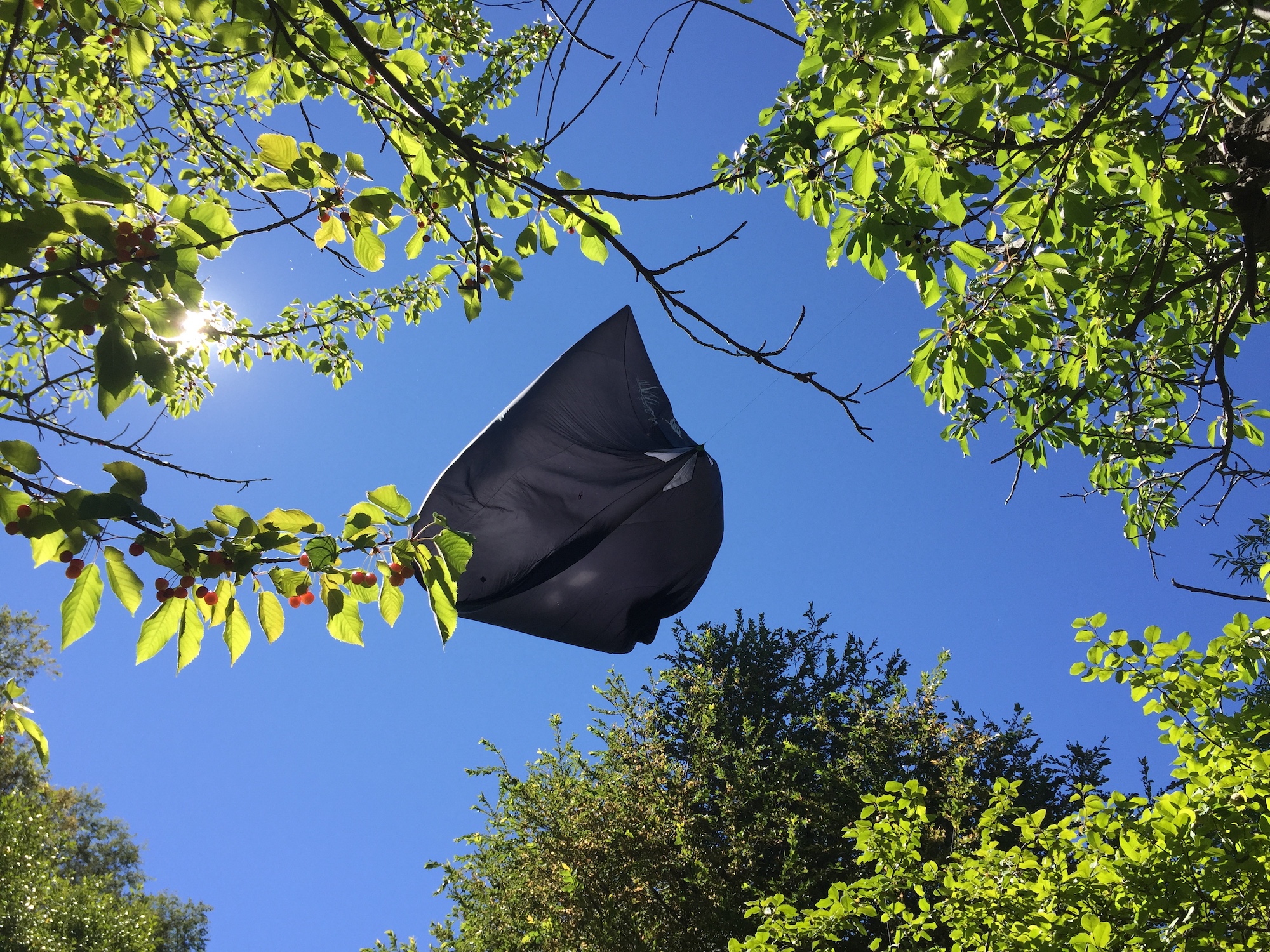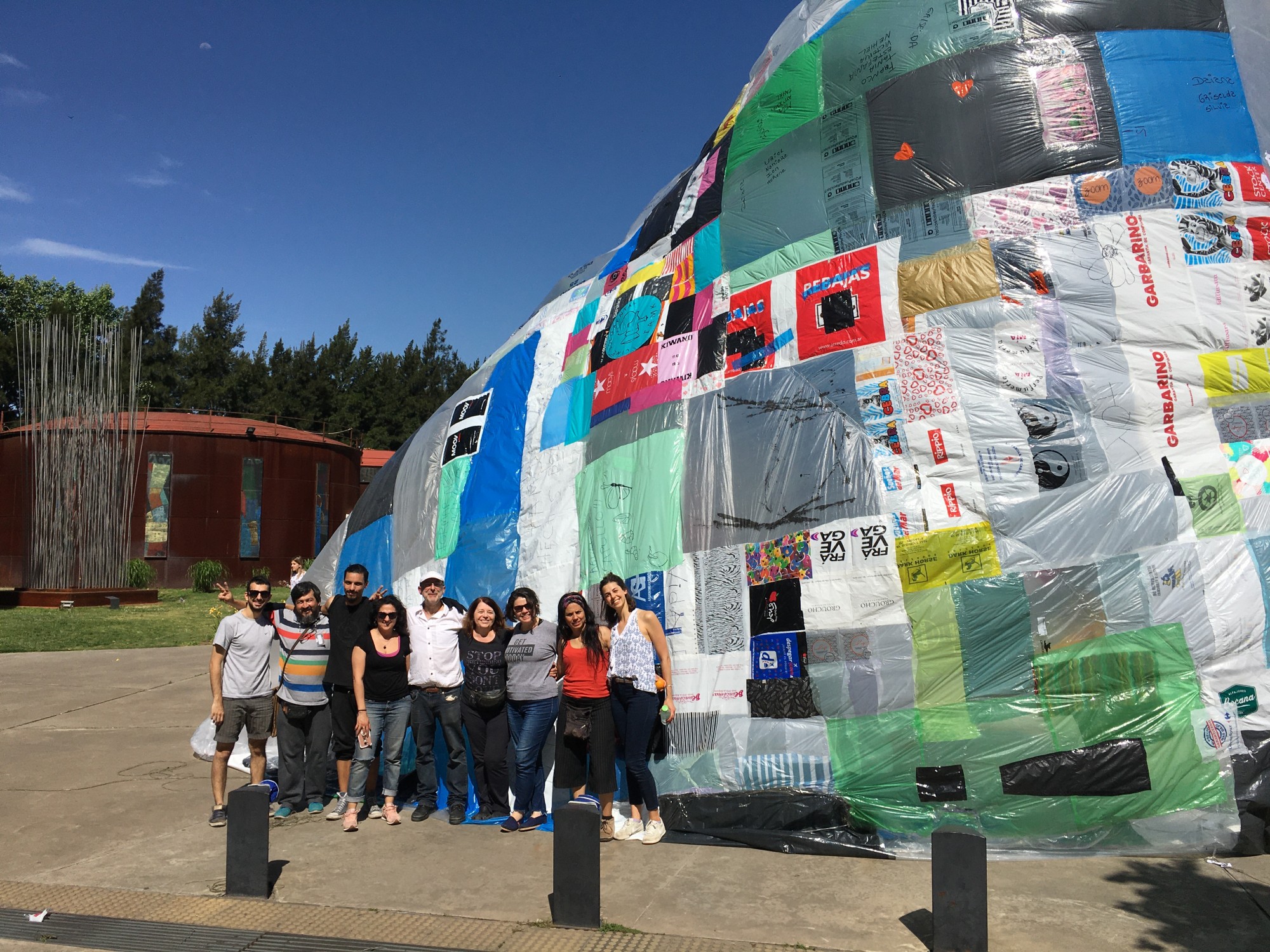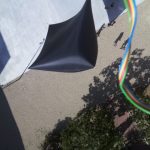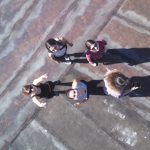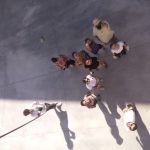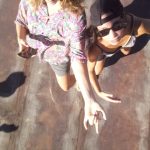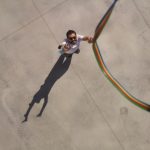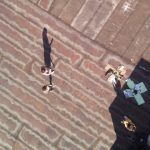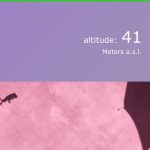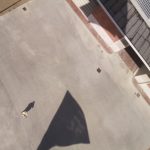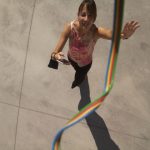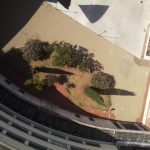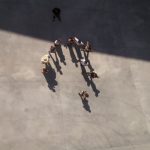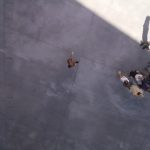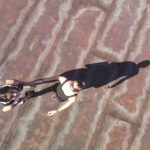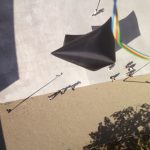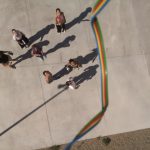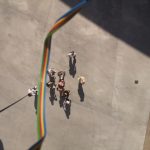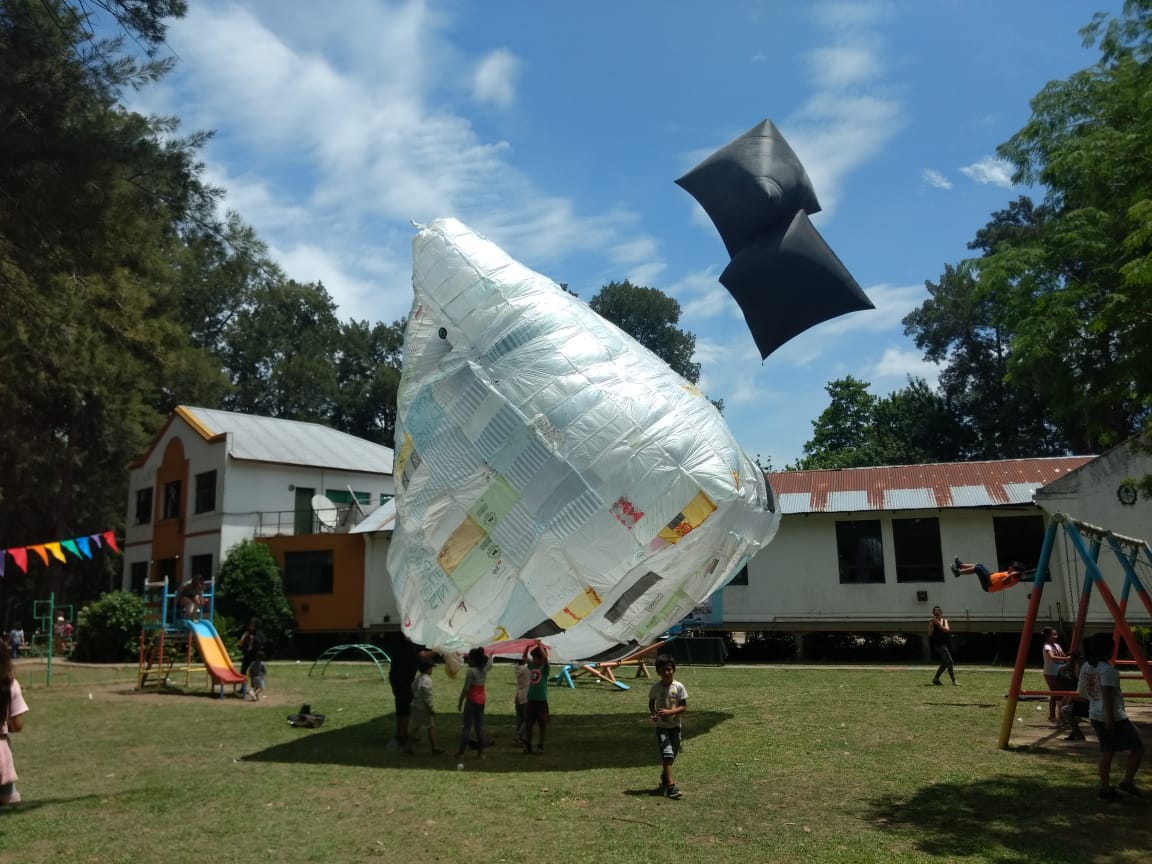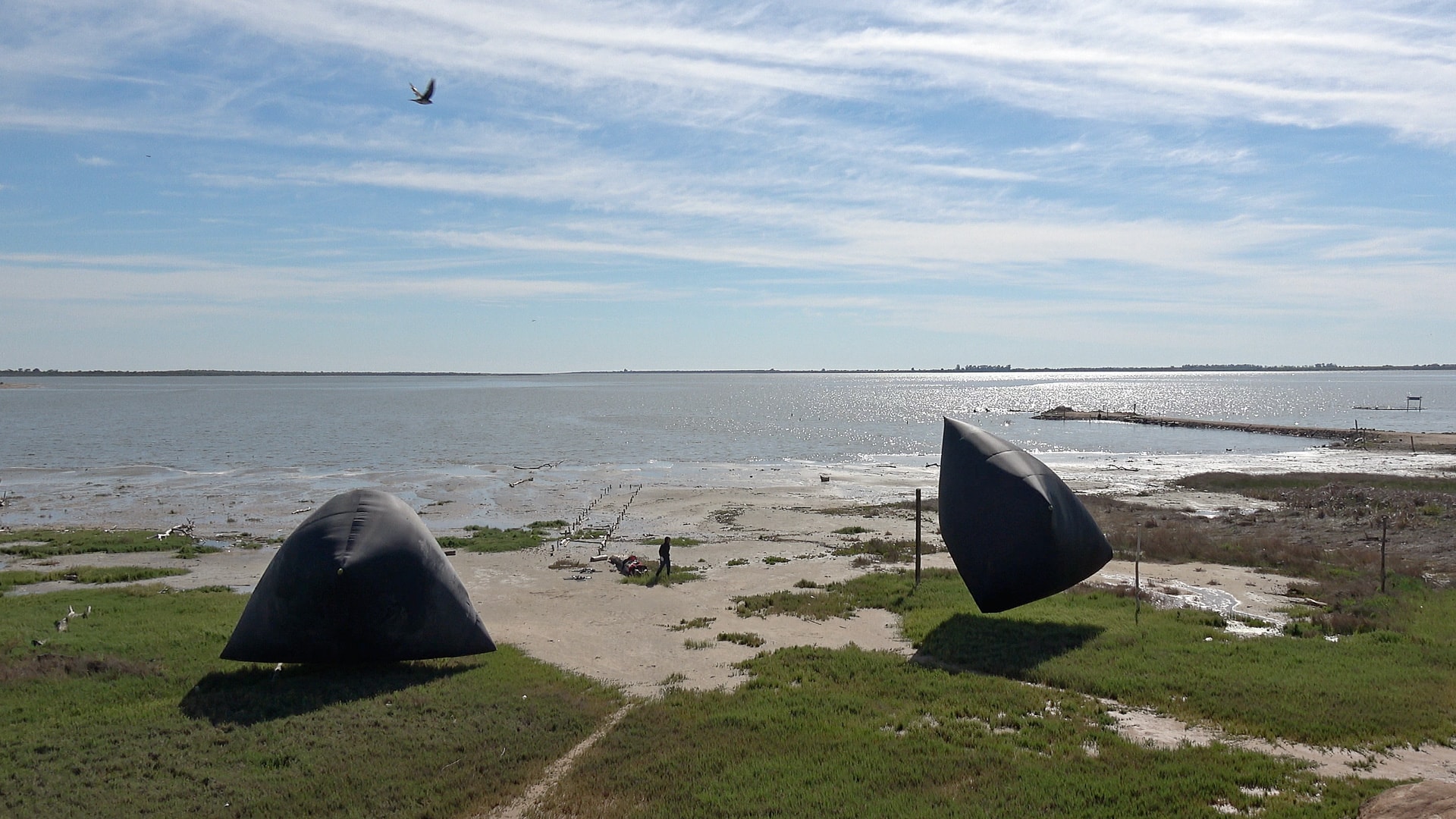On Wednesday 18 August 2021, the Aerocene community of Buenos Aires and the islands of the Paraná River Delta participated in the demonstration in front of Congress in favour of the Wetlands Law. The protest was organised by different civil society groups, self-organised movements and political parties, coordinated by the Multisectorial Humedales.
Continue readingAerocene @ Abitare Conessioni Festival
In August 2021, the Aerocene Community was invited to participate of the Abitare Conessioni Festival, in the Barbagia region in Sardinia. Represented by Lorenzo Malloni, during several days Aerocene sculptures flew to the backdrop of of Orani, it’s people and beautiful town.
Continue readingTreptower Park Berlin
As the boreal summer slowly unfolds in the northern hemisphere, a group of Aerocene community members from Berlin set out to inaugurate the aerosolar floating season. United at Treptower Park, alongside the river Spree, they inflate the Aerocene sculpture contained in the Backpack by running around, filling it up with the same air we all breathe. As the sun heats, slowly, the air inside becomes warmer and thus lighter than the air outside.
Continue readingFloating above and below: Aerocene Frozen Lake, Rummelsburg, Berlin
Sunday, 14th of February 2021
Rummelsburg, Berlin, Germany
52.4946° N, 13.4800° E
TIME ON AIR: 360′
Aerosolar Pilots:
Lorenzo Malloni
Irina Bogdan
Thomas Charil
Alberto Vallejo
Giulia Ambrosini
Diego Alejandro Puerto Martinez
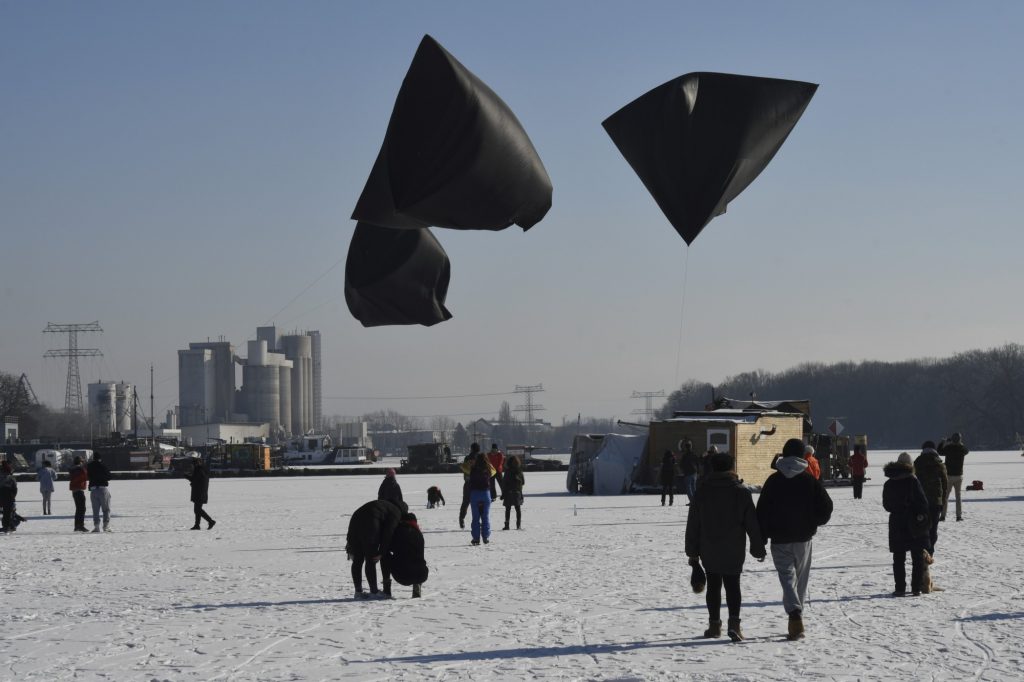
After a week of very low temperatures, a rare opportunity has been made possible by especially harsh winter conditions in Berlin this year: a sharp radiant sun has uncovered above the city and its frozen waterways, allowing thousands of people to walk on thick ice.
Early in the morning, a group of six Aerosolar Pilots borrowed three Backpacks from the Aerocene Foundation and experienced a flight free from carbon emissions on top of the frozen Rummelsburg lake in Berlin.
The vast white surface of the lake had stopped any of its motions, no water ripples, boats remaining still in their positions, as decontextualized artefacts on a deserted land. Terrestrial beings are now bashfully walking where they were not allowed to only a day before. A spontaneous situationist environment has come to life, an empty, vast stage where the public and performers merge, activating a place for renewed shared experiences.
As soon as the black Aerosolar sculptures get inflated on the ice with only air, the power of the sun lifts them off instantaneously – amplified by the albedo reflection effect on the white, frosty lake. Immediately, their movements in the thin air generate a focal point attracting the public and participants onto the wide white stage.
The Aerosolar Pilots share their floating experience with whoever is around, passing the fluctuating rope and initiating a bonded, bonding slow dance between humans and the solar airborne creatures.
The transitory stage hosts the first act of a participatory piece in which the sun, the winds, human and non-human are all protagonists.
Although the stunning beauty of the three hours experience, bathed in the wintry sun, it is not easy for the aeronauts to forget that under that thick layer of ice, down to the bottom of the lake, the contamination of several decades of industrial waste has made impossible life conditions for many autochthonous species.
As stated by the Bundesanstalt für Gewässerkunde:
“The combination of high chemical contamination with persistent organic and inorganic chemicals, toxicity and specific substrate composition, makes a natural repopulation scenario for the improvement of the biological diversity extremely improbable”
When leaving the lake, the aeronauts’ wish is that the mirage-like white blanket that has covered it for the day, allowing for them to fly aerosolar on top of it, will be a reminder of what lies beneath it, at its very bottom, where man-generated pollutant particles have layered in-depth; that our waste does not only end up in the air that we breathe, but also in the very populated hidden underworld of our lakes, rivers and seas, all very close to us, but perhaps often forgotten merely because we can´t walk on them.
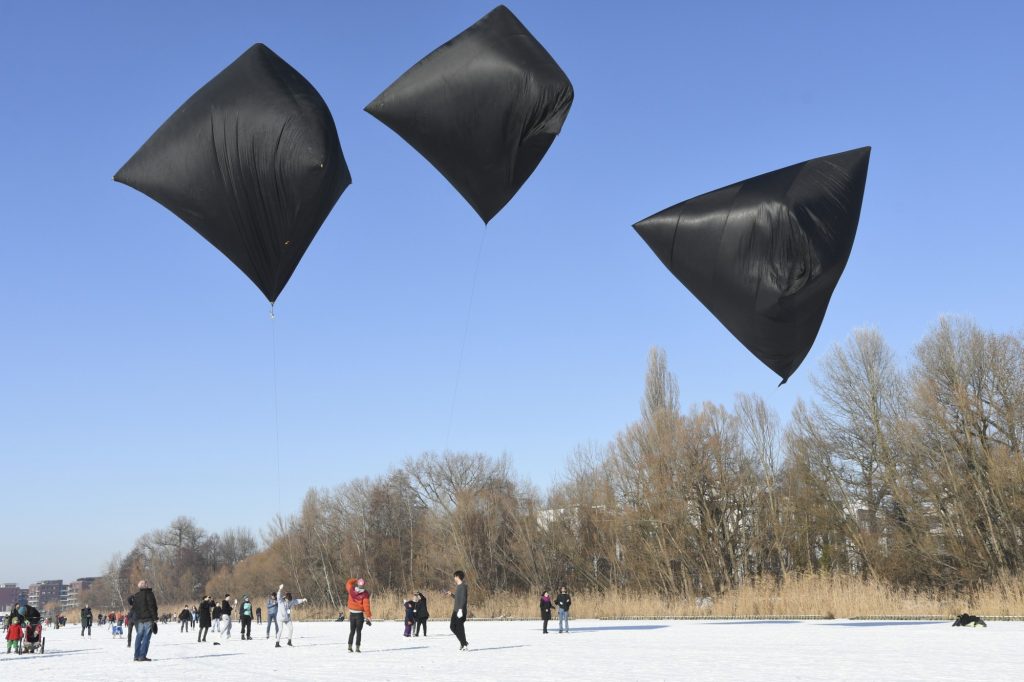
Photography by Aerocene Foundation and Tom Klingbeil, 2021, licensed under CC by Aerocene Foundation 4.0
Aerocene Laboratory Moscow
Thirteen participants. Four months of waiting for a suitable weather forecast in Moscow. Two unsuccessful launch attempts with the Aerocene Backpack.
And finally, –20°C. We unrolled the black fabric, took in the air. The sun came out almost immediately. It took just a few minutes for the air inside to warm up and raise the sculpture.
We proved to ourselves that flying without fuel is real. Even in Russia, even when it’s a little crisp and snowy at –20°C. All we need is sun and a minimum of wind.
People will have to become even more weather dependent soon, will have to tactfully slow down and literally learn to plan flights. But why not? In my opinion, it’s awesome!
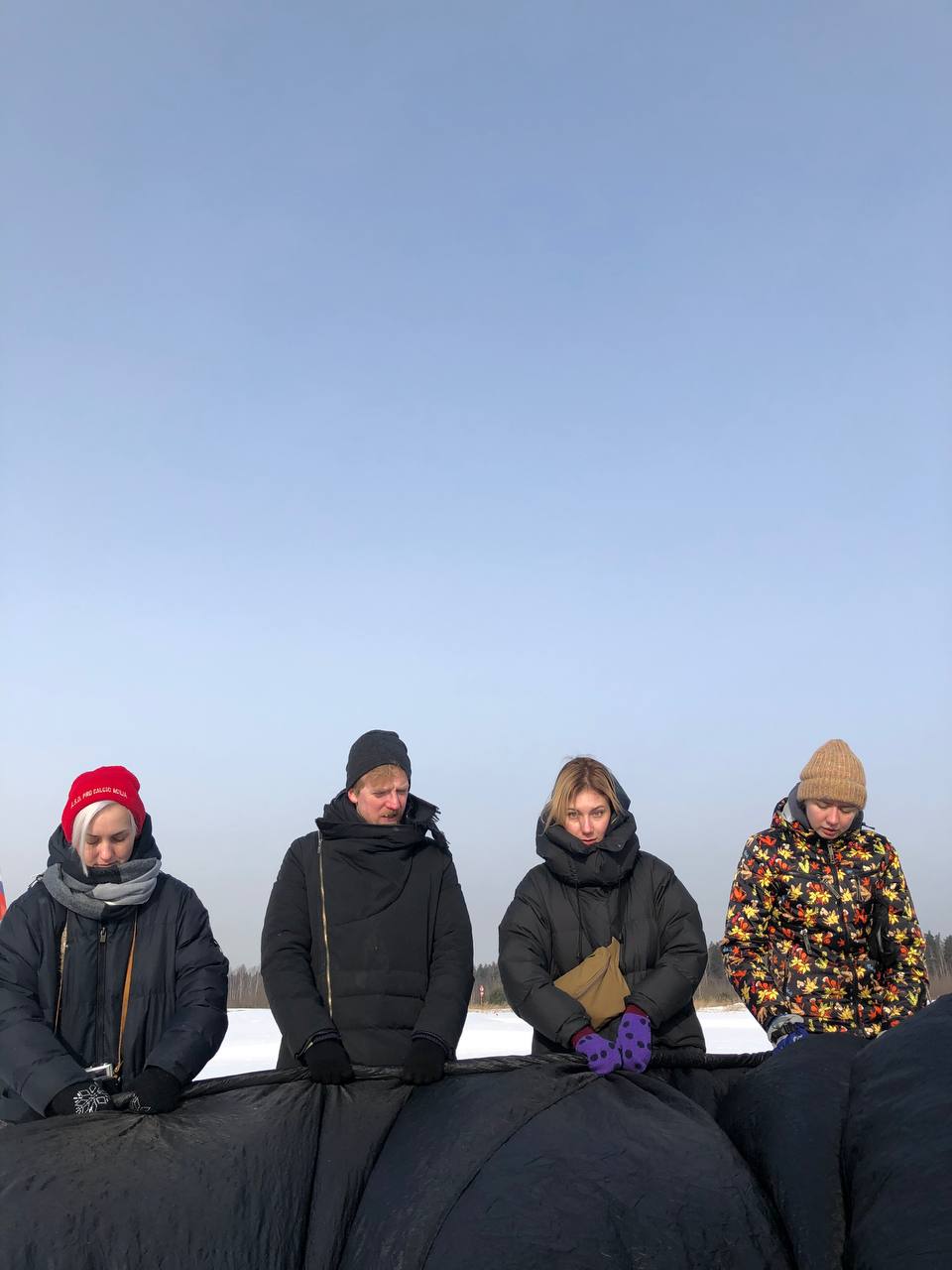
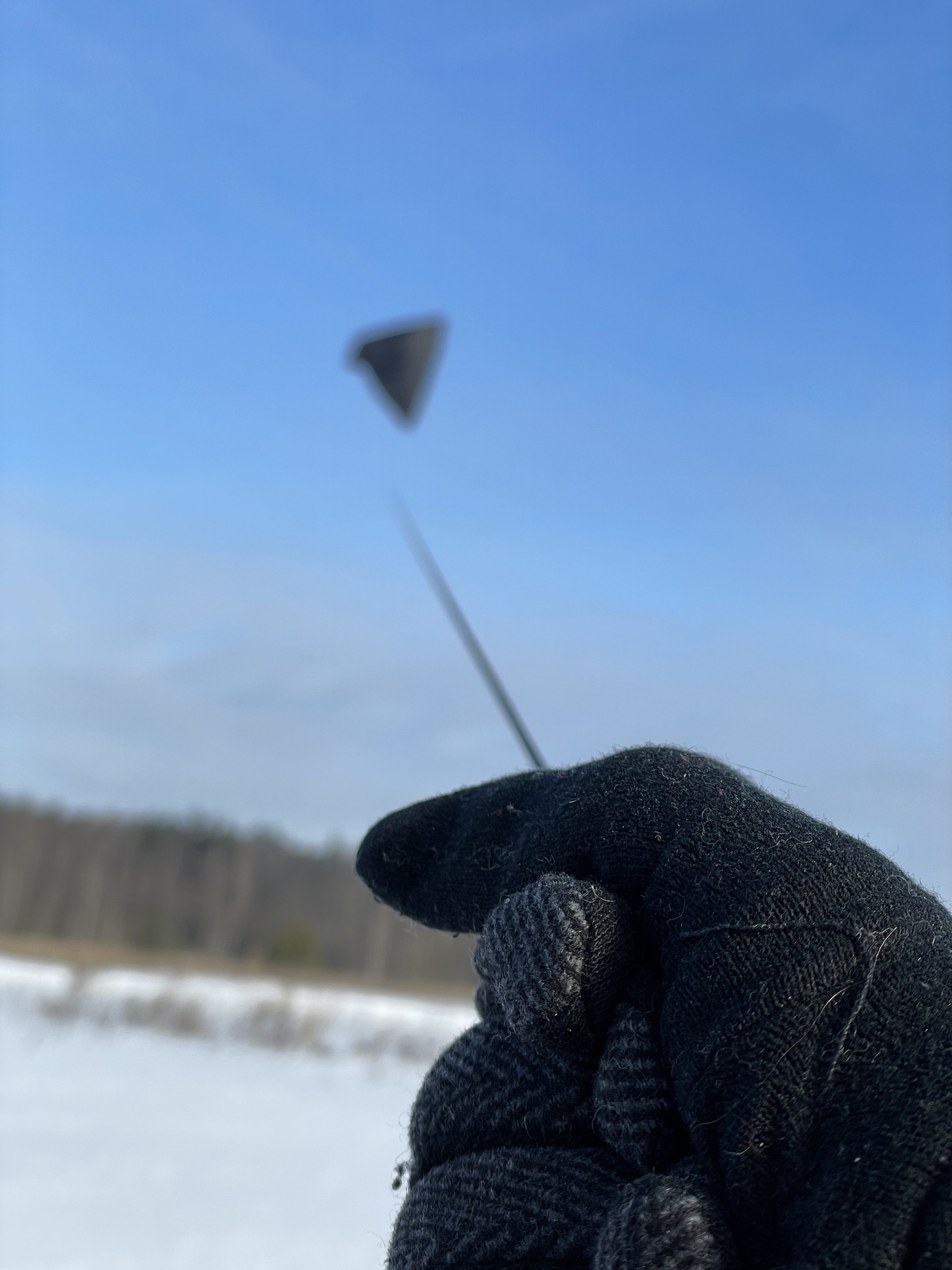
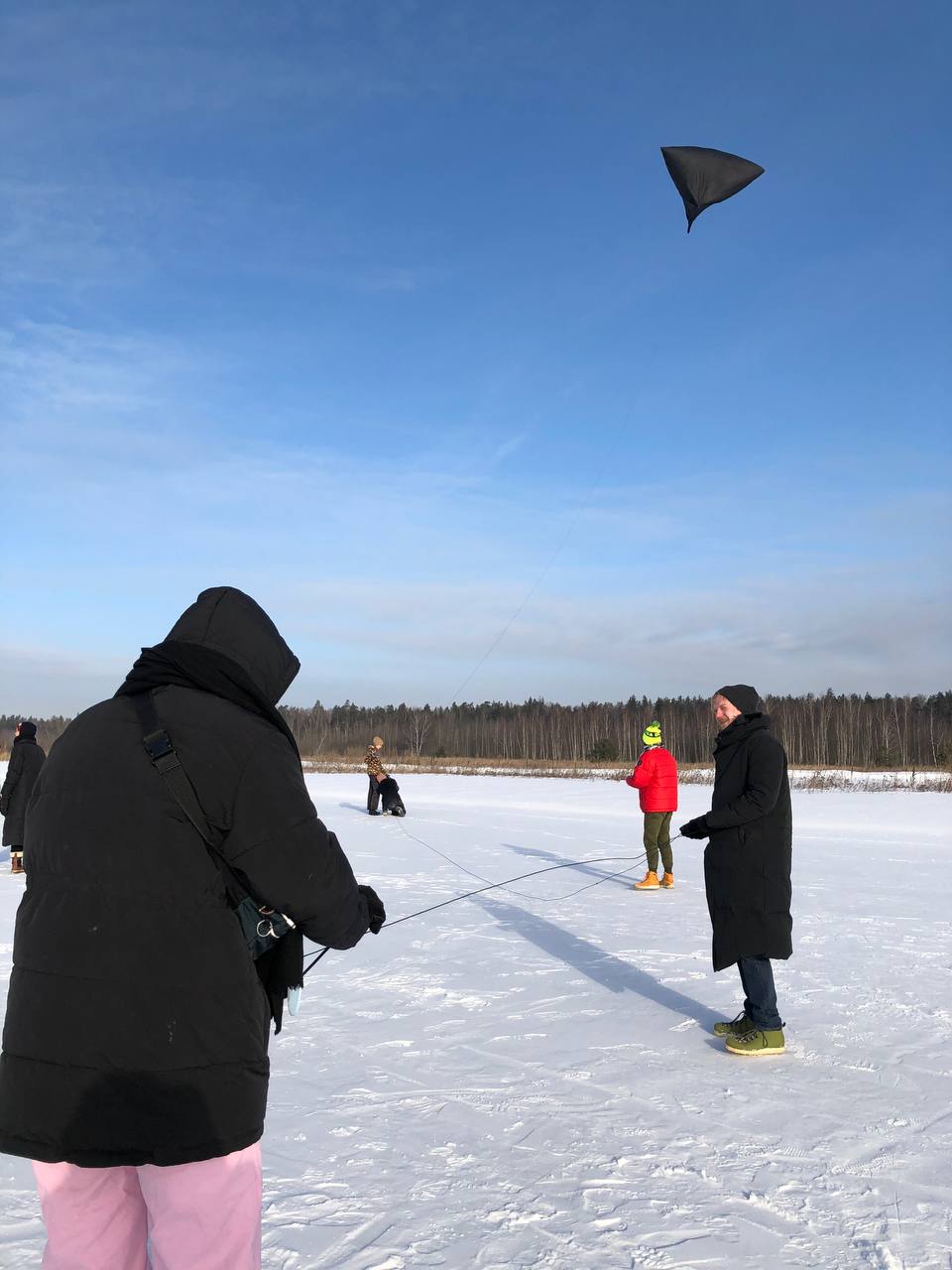
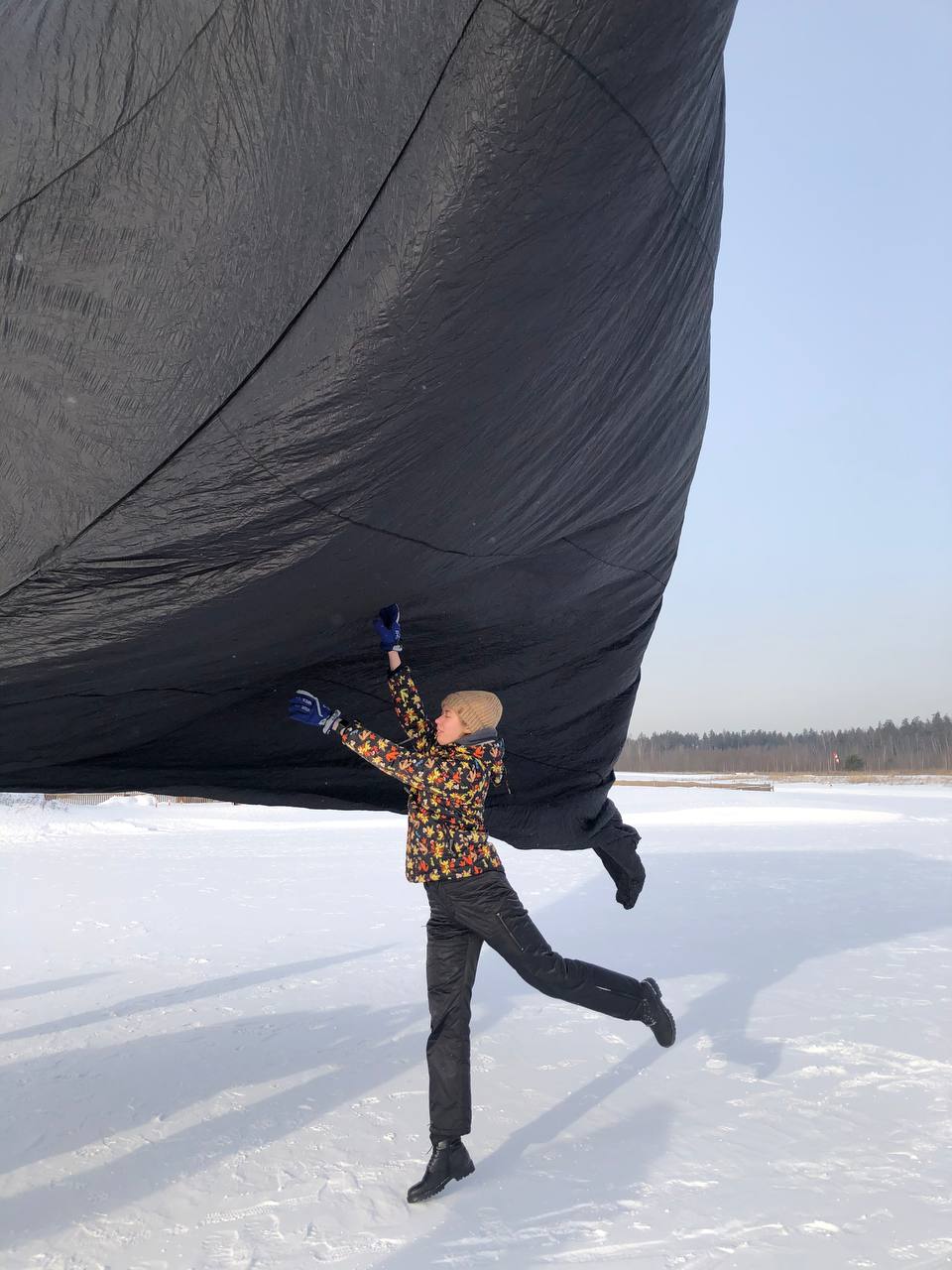
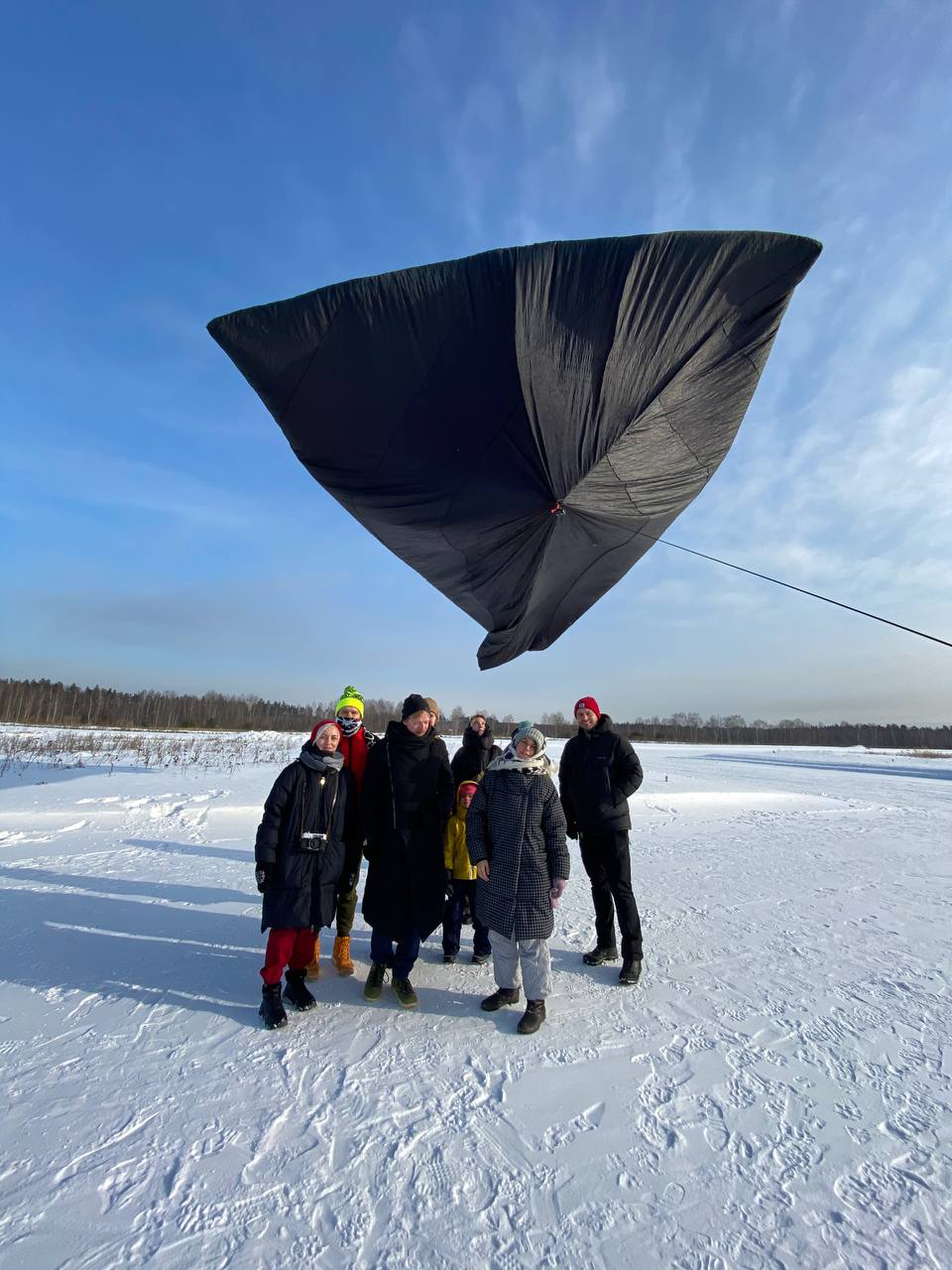
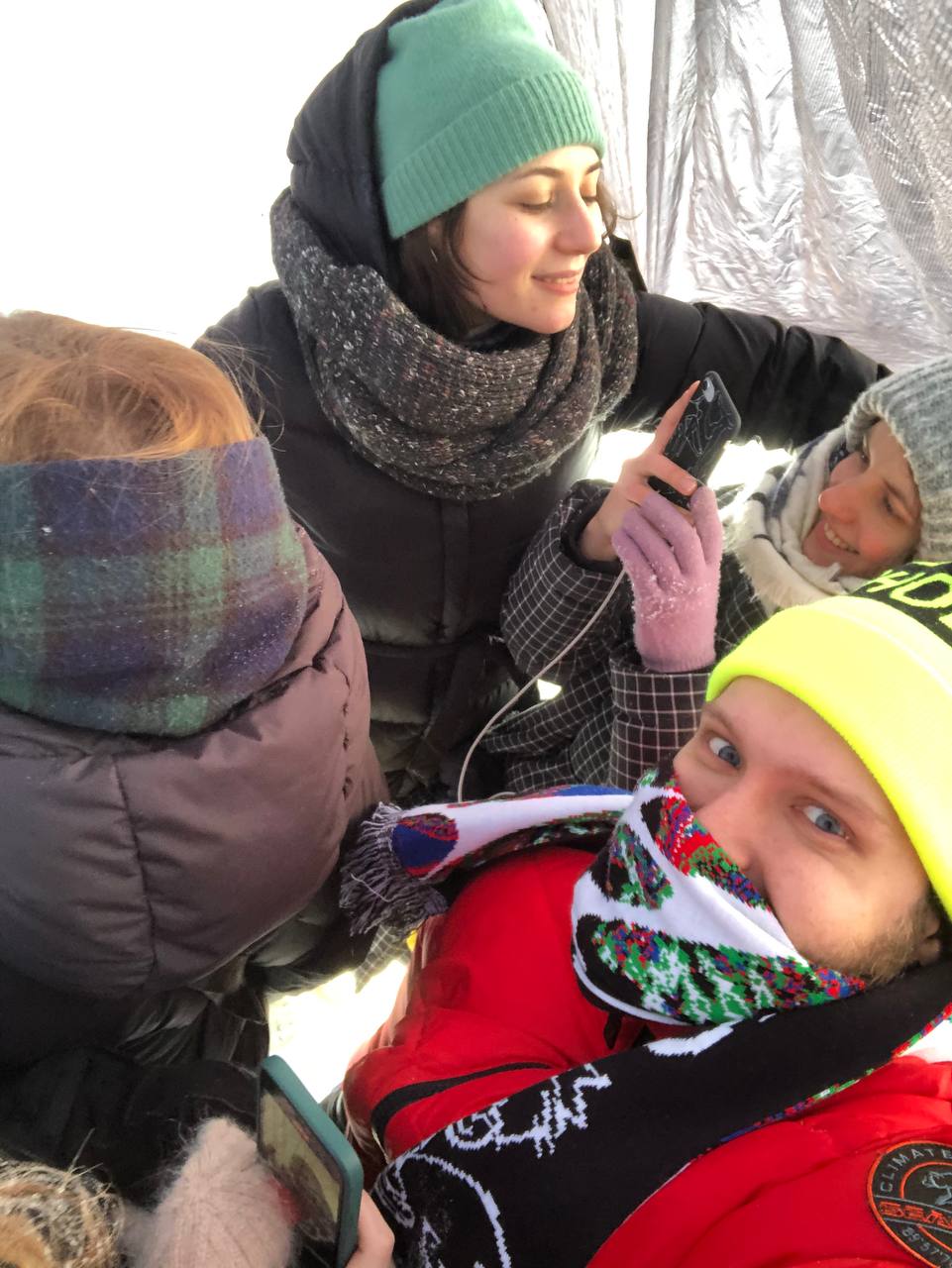
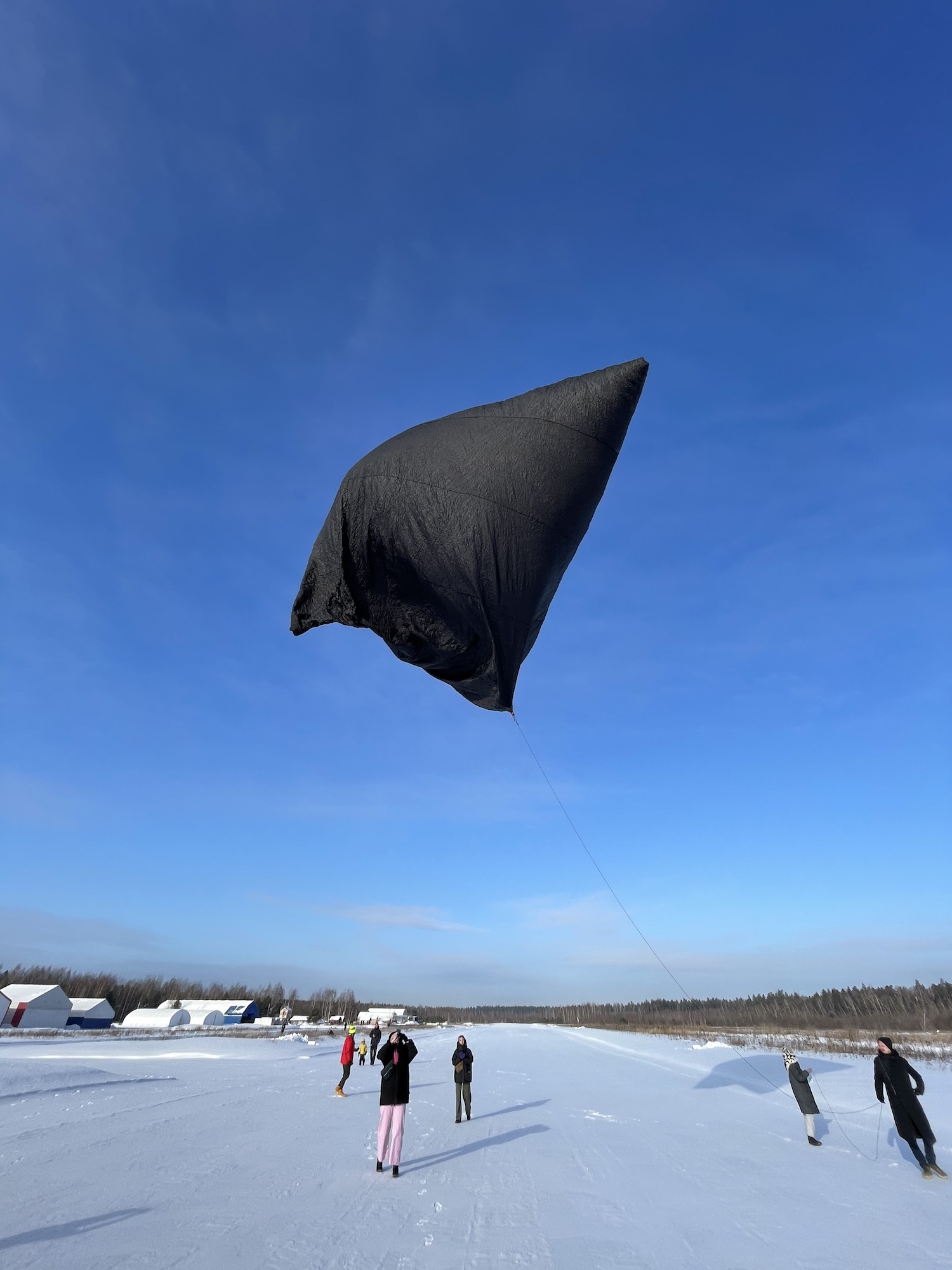
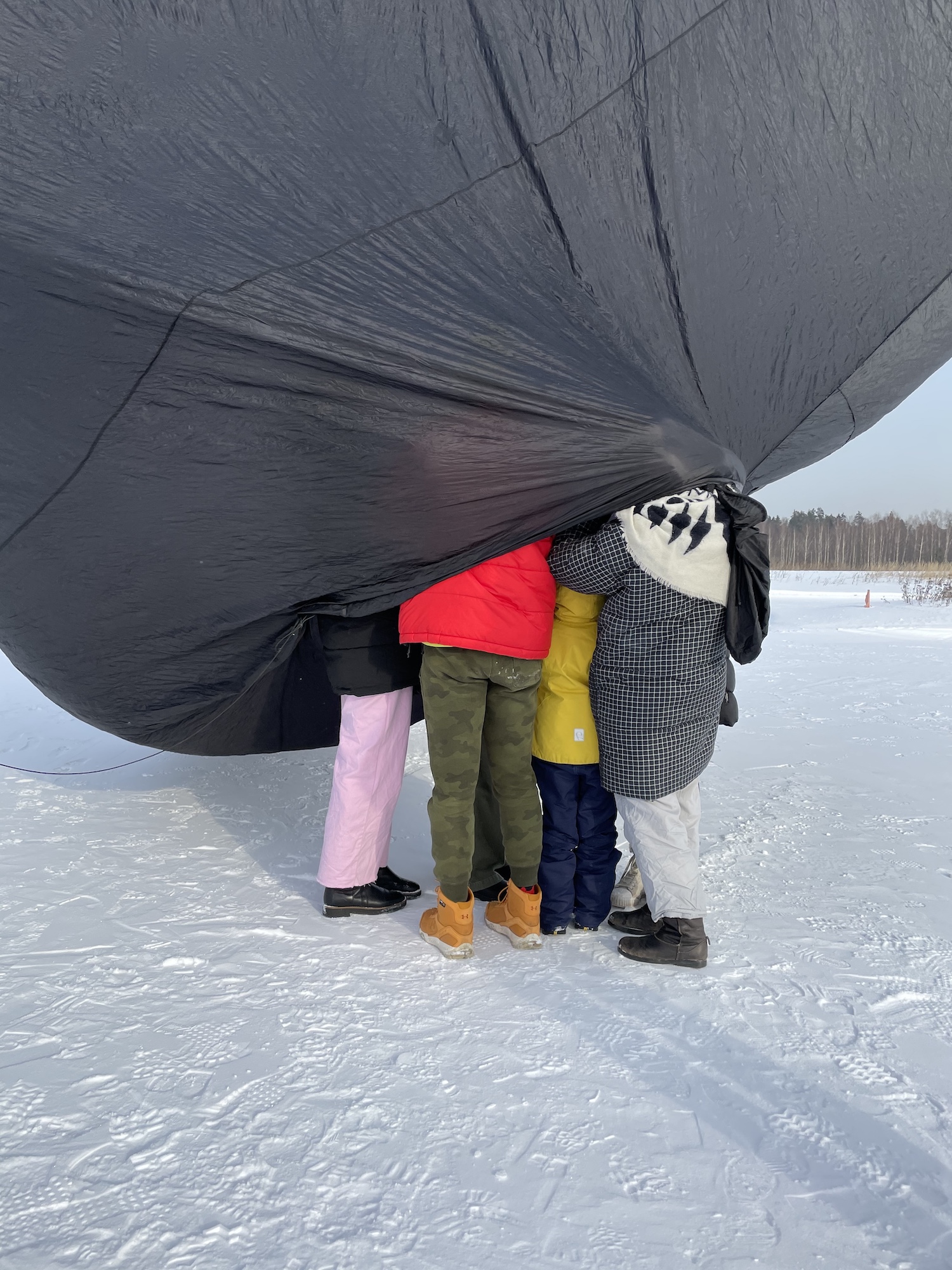
Launch data
- 8th February, 2021, 10.50 AM
- Chernogolovka airfield, Moscow region
- southwest wind, 2 m / s
Organized by Garage Museum of Contemporary Art
Katya Vlasova
Katya Yakovleva
Nu Simakina
Nastya Mleko
Oks Rudko
Margarita Polyanskaya
Maksim Saleev
Nikolay Golikov
Svyat Kilesso
Ksenia Nechaeva
Denis Sivkov
Technical consultant Denis Efremov
Program manager Aleksandra Evtushenko
Curator Iaroslav Volovod
Patagonia Argentina
During the austral summer 2021, several Aerocene Community members were able to fly aerosolar, even in Patagonia! Neuquén and Río Negro signed this January the socio-environmental pact to preserve the air, so that we can all breathe.
Continue readingMuseo Aerosolar Reconquista
Story and impressions of the work process
By Carlos Almeida
At a time when our society is hurt and divided, the mottos: Work free from social and human borders and take advantage of the energy generated by community work, were good guides for the incubation of Museo Aero Solar “Reconquista”.
With these objectives in mind, a group of puppeteers and visual artists gathered in the academic space “Inflatable Laboratory”, decided to invite social groups that for some reason were exposed to different situations of social vulnerability to join the project.
We chose to express ourselves from what is usually considered as waste, from what is despised, from what does not manifest at first sight the possibility of becoming an artistic object.
Perhaps those who contributed most to making the construction of this great sculpture possible were precisely the people and groups in the most vulnerable situations.
Most of the bags that make up the Museo were rescued from the waste that arrives from Buenos Aires to the Bella Flor urban recycling cooperative, which is located in the town of José León Suárez, Buenos Aires. This highly contaminated and vulnerable region is called “Reconquista River Zone”, hence the name of our Museo.
In the same area of Reconquista River, very close to the facilities of Bella Flor Cooperative, is the North Penitentiary Complex, where the San Martín University Centre (CUSAM) is located. The CUSAM is a university centre dependent on UNSAM, where prisoners and prison guards can study together in an unprecedented experience. Women and men.
These two spaces, where daily life is very difficult to face, were the epicentres of the construction of the “Reconquista”. Approximately two hundred people have worked on the construction of the Museo:
- Workers from the Bella Flor Urban Recycling Cooperative
- Students deprived of their ambulatory freedom who are part of the CUSAM community
- Teachers, students, graduates and management staff of the UNSAM Institute of Arts
- Professors and students of the Institute of Architecture and Urbanism UNSAM
- Teachers and young students from secondary schools in the area
- People who independently joined the initiative by contributing bags
- Recyclers, puppeteers, sociologists, anthropologists, circus artists, dancers, documentary makers, technicians, visual artists, philosophers, architects and enthusiastic people who joined.
We set out to build an Aero Solar Museo from the slogans generously shared by Tomás Saraceno and his team on Aerocene’s website. We set the objective of making the big sculpture by previously building a 300 square meter sheet, equivalent to a 10 x 30 meter rectangle, with bags or material that had already had some kind of previous use.
More than half of the material that makes up the Museo Reconquista was rescued from the mountains of rubbish that circulates daily in the facilities of the Bella Flor urban recycling cooperative. We also appealed to friends and family who would like to donate bags. We detected in our community that in general young people and teenagers do not usually keep plastic bags in their homes, it was easier to receive them thanks to the contribution of older people.
It is important to highlight that the workers of the Bella Flor Cooperative dedicated a lot of time, effort and joy in the recovery of bags for this purpose and they selected them thinking about the colours and formats that were most attractive to them for the construction of the Museo. After that enormous work they also spent several days cleaning and gluing bags.
Two special mentions are due to the plant coordinator Nora Rodríguez, who proposed the name “Reconquista” and considered that one of the activities to be carried out by the work cooperative was artistic production, because both she and her team had a lot to express from that place. The other special mention goes to Ernesto “Lalo” Paret, a great territorial articulator who understands and promotes expression through art in the processes of social reconstruction.
At this point it is important to mention the other driving idea of the project: The small, the oppressed, the individually and socially depressed can be transformed and generate a sense of expansion when they manage to take AIR in a communitarian way. We like the metaphor of the flattened Museo when it is placed on the floor before being set up, in relation to the air-filled, expanded, vital and moving Museo.
In order to make the 300 square metre sheet more concrete, we proposed to build, with each group that participated, sheets of approximately 50 square metres. Each day of work lasted approximately three hours and ended with a game of raising the newly constructed sheet of paper between all of us, bagging air and, when we came down, building a “bubble” where we all stayed inside and there… we sang, said poetry to each other, laughed and played freely.
Both the finished Museo and these previous instances of play are spaces of ephemeral habitability, meeting atmospheres, spheres of air.
Another slogan that crossed the construction process was that the participants had the possibility of writing, drawing and intervening in the sheets as they wished, expressing what they wanted, in absolute freedom, without any slogans and without any limits. This experience had its most impressive point in the CUSAM where the students deprived of their ambulatory freedom used the possibility of expressing themselves by writing on the plastic with extreme dedication, care and depth.
As the sheets were being built and reached our work base on the UNSAM Campus, the team of puppeteers and visual artists from the Inflatable Laboratory chair brought them together, trying to build a logic in the combination of colours, textures and written interventions.
The whole assembly process was guided by two models, one folded with the final shape of the tetrahedron and the other with the open rectangle and the possibility of observing it from both sides, which guided us to the position where each sheet could be placed.
These objects were very useful to explain to the people who joined the project what the final shape of the object we were building was going to be and it was also useful for the folding and final assembly stage.
The first assembly of the Museo was carried out inside a large circus tent that the University has on its Campus. We enjoyed living in and observing this wonderful and enormous object. That day, a cultural anthropology class was held inside the Museo and then we made the object independent from the air entry point so that the puppeteers could manipulate it from inside by means of some threads tied to the internal vertices and generate movements through the space. The object took on a life of its own… It was an incredible experience. That moment was very well recorded by Joaquín from Aerocene Argentina.
The first public and open-air installation was carried out in an open space on the Campus as part of the First International Congress of Art and Science “The Skies” organised by UNSAM. The following stagings took place on a rugby field located inside the prison complex, in a shed where the Museo was converted into a classroom for a philosophy class, and in other sectors of the Campus where it was set up for repairs.
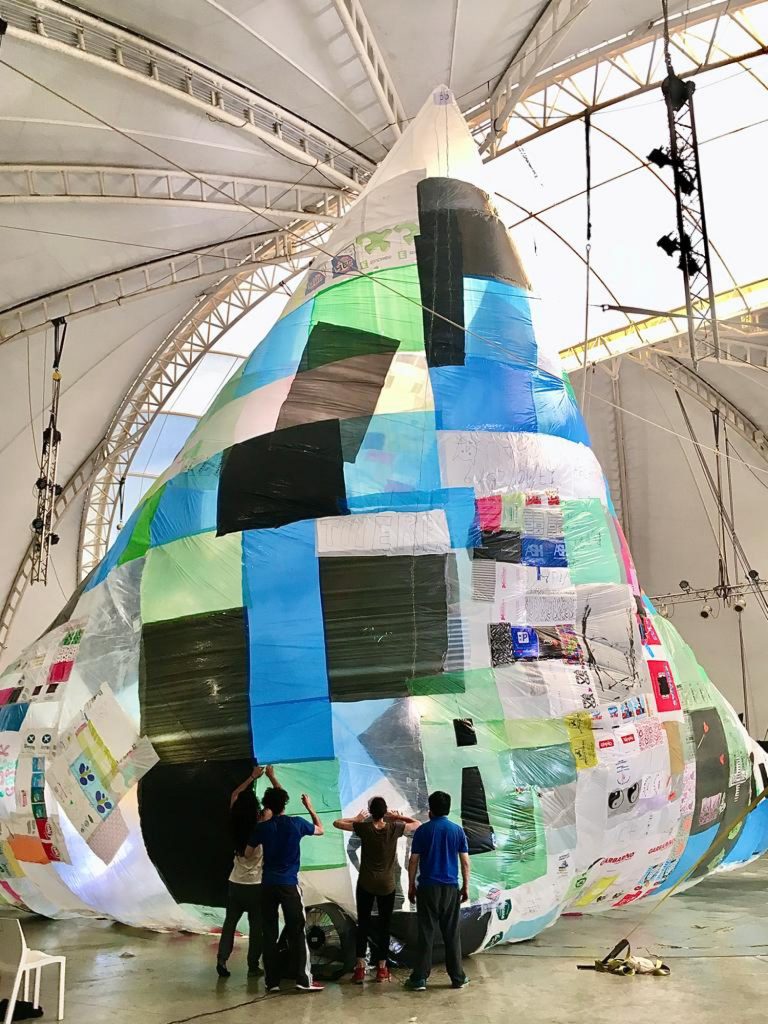
The Museo Aero Solar Reconquista is a collectively owned object that will continue to receive the written interventions that the people who observe it or live in it wish to make and will remain available to the whole community to be mounted wherever a team of people has the desire to do so.
We know that a moment will come when the fragile material that makes up the object and requires permanent repairs will have already completed its life cycle. At that moment we will make a final survey of everything written and drawn on it and surely in some singular ceremony it will be given back to the Bella Flor Cooperative to enter a recycling process. It sounds sad… but we know that this material, added to the work of so many people, has allowed us to recycle and expand our emotions and our minds.
We thank Tomás Saraceno, Joaquín Ezcurra, Maxi Laina, Dalia Maini, Sasha Engelmann and all the aeronauts who through this open source initiative have inspired us and allowed us to go through some moments of our lives with a little less “gravity”.
Project General Coordination
Carlos Almeida
Aerocene Argentina Coordination
Joaquín Ezcurra
UNSAM Territorial Coordination
Ernesto “Lalo” Paret
Bella Flor Cooperative Coordinator
Nora Rodríguez
CUSAM Diploma in Art and Management Coordinator
Marcos Perearnau
Artistic and technical management advisors
Camila Almeida
Nehuen Serpa
Inflatable Laboratory 2019 of the IAMK: Team responsible for the assembly and mounting of the Museo Aero Solar “Reconquista/Arte”.
Manuel Gómez
Rocío García
Carla Guerra
Lorena Fiorence
Gabriela Longo
Fernando Orecchio
Maria Paula Company
Daniel Pagnota
Laura Gómez Pescuma
Walter Dantes
Bella Flor Cooperative Workers
Daiana Recalde
Griselda Taborda
Silvia Sánchez
Alcira Sánchez
Centro Universitario San Martín (CUSAM) Teachers and students
María Laura Compañía (Teacher)
Juan Perea Pons
Chaparro Acosta
Pablo Sánchez
Arce Rolón
Iván Coronel
Diego Armóa
Jonatan Martínez Gómez
Brian Matínez
Alejandro Vertoti
Gayoso Martínez
Leonel Malinovsky
Guillermo Martínez
Ángel Silva
Damián Vallejos
Luis Varas
Víctor Vivas Molina
Acevedo Gómez
Silvana Ortiz Casco
Macarena Sosa
Rodrigo Altamirano
IAMK Cultural Anthropology Department students
Paola Rojas
Tamara Prusak
Manuel Arias
Lucía Beatriz Chávez Mérida
María Paula Chalita
María Micaela Chirinos
Sariah Micaela Fernandes
Germán Alejo Haro
Victoria Marecos
Laura Medina
Monserrat Morlans
Jefferson Queipo
IAMK Teachers and management staff
Carolina Scaglione
Micaela Almeida
Florencia Petersen
Mercedes Lozano
Axel Lázari
Patricia Galletti
UNSAM Territorial Articulation Area Team
Nancy Salvatierra
Cecilia Lemandi
Gisela Bustos
Institute of Architecture and Urbanism of UNSAM professors and students
Sebastián Vela (Professor)
Matías Lien Benitez (Professor)
Juan Pablo Berbery (Professor)
Flavio Adrián Becerro (Professor)
Sebastian Alfieri
Geronimo Alvarez
Agustin Tomás Antolini
Daniela Aramayo
Maximiliano Armando
Jose Balbuena
Micaela Bazzano
Ignacio Begue
Gianluca Biaggetti
Keila Blackal
Carmen Elisa Bordon
Tamara Capornio
Yamila Carrazco
Lucas Castillo
Lautaro Celada
Elias Cena
Vanina Chaparro
Lautaro Ciongo Pasotti
Tobias Costa
Alejandra Cubides
Ignacio Evangelista
Morena Rene Federico
Diego Fernandez
Ivan Fernandez
Abril Gamarra
Federico Garcia Beres
Sol Giraudo
Mayra Romina Gomez
Juan Franco Gomez
Josefina Gonzalez
Juan Manuel Grasso
Magali Ariana Kalenok
Juan Ignacio Konradi Proto
Sebastian Konradi Proto
Juan Ignacio Konradi Proto
Daniela Kunschek
Santiago Lamela
Jimena Ledesma
Yair Leon
Gonzalo Luciani
Adriana Luy Martinez
Marina Mariscal
Agustina Martinez
Agustina Mitjans
Nicole Monpelat
Nazareno Monti
Natalia Morboso Pipparola
Micaela Morin
Nicole Moya
Maria Ojeda
Facundo Paniagua
Gonzalo Parada
Agustina Pastor
Martina Pavone
Sara Peña Monroy
Maria Belen Perez Gaitan
Gonzalo Pernicone
Tomas Piragine
Gonzalo Pombo
Nazarena Prada
Delfina Prebisch
Agustina Presas
Tomas Ramirez
Mario Jeronimo Rodriguez
Tomas Rodriguez Das Neves
Aylen Rubin
Eric Ruiz
Antonella Rocio Saccomanno
Camila Scaldafferro
Milagros Simon
Agostina Sisca
Matias Spitzer
Patricio Tamborenea
Ornella Tantino
John Tibaquira
Tamara Tjoruk
Tomas Turner
Cecilia Ureta
Silvia Vallejos
Nayla Villalba
Lautaro Villalba
Fernando Lautaro Villalba
Edgardo Villanueva
Liz Viveros
Nadia Von Schey
Mariano Willems
Matias Leonel Zotto
Philosophy, School of Humanities UNSAM Professor and students
Santiago González Cáseres (Professor)
Carlos Dario Romero
Damaris Vanag
Melanie Llarin
Ramon Mujica
Cristian Pampin
Rogelio Yrurtia School of Artistic Education Teachers and adolescent students
María Clara Gabor (Teacher)
Andrea Daleoso (Teacher)
Jimena Sánchez (Teacher)
Mónica Villaverde (Teacher)
Veruscka Chuan (Teacher)
Eva Giulia Ayala
Sofia Buldrini
Sofia Chiara Cammarano
Luciana Macchi Defeo
Violeta De la Fuente
Micaela Nicole Karo
José Maria Martinez Didolich
Martín Lisandro Moreno
Sophia Brigitte Quiroga Grosso
Maite Quiroga Tevez
Florencia Ricci
Vicente Gala Rodriguez
Luna Sandonato
Manuela Seoane García
Milena Maria Vivaldi
Aylin Amén
Laura Melanie Sabrina Bautista
Ariadna Calabró Villarreal
Carla Cámera
Agustina Carullo
Joaquin Casas
Lara Chacur
Haret Coronado
Ivon Condori
Ema Correa
Lauro Divito
Ema Falcón
Clara Fernandez
Rocío Gómez Fernández
Franco Guzmán Mamani
Barrios Agustín López
Lourdes López
Angely Mamani Sillero
Malena Ramos
Eneas Rodriguez
Ramiro Sarno
Lourdes Orkonina
Secondary School 31 of San Martín teacher and students
Analía Lozana (Teacher)
Nicolás Aquino
Benjamín Cabrera
Walter Mena
Tiziano Pereyra
Esquivel Milagros
Other anonymous people, friends and relatives of ours, who participated in the MAS by donating
plastic bags for its construction.
Teacher in charge of the Inflatable Laboratory
Carlos Almeida
Dean of IAMK
Laura Malosetti Costa
Rector of UNSAM
Carlos Greco
ARIA Days | Florence, Italy, 2020
On the occasion of the exhibition Tomás Saraceno. Aria
in Florence, Palazzo Strozzi, the collaboration between Aerocene Foundation, Fondazione Palazzo Strozzi and Manifattura Tabacchi led to the take-off of ARIA Days.
Over three days, Friday 11 to Sunday 13 September 2020, Aerocene sculptures elevated in the air of Florence, imagining how to move and travel without the need for fossil fuels: a symbol of a new age for the planet, the era of the Air.
Becoming buoyant only with the heat of the sun, the aerosolar sculptures rose above Piazza dell’Orologio at Manifattura Tabacchi thanks to the collaboration of a volunteer group trained by Aerocene Foundation.
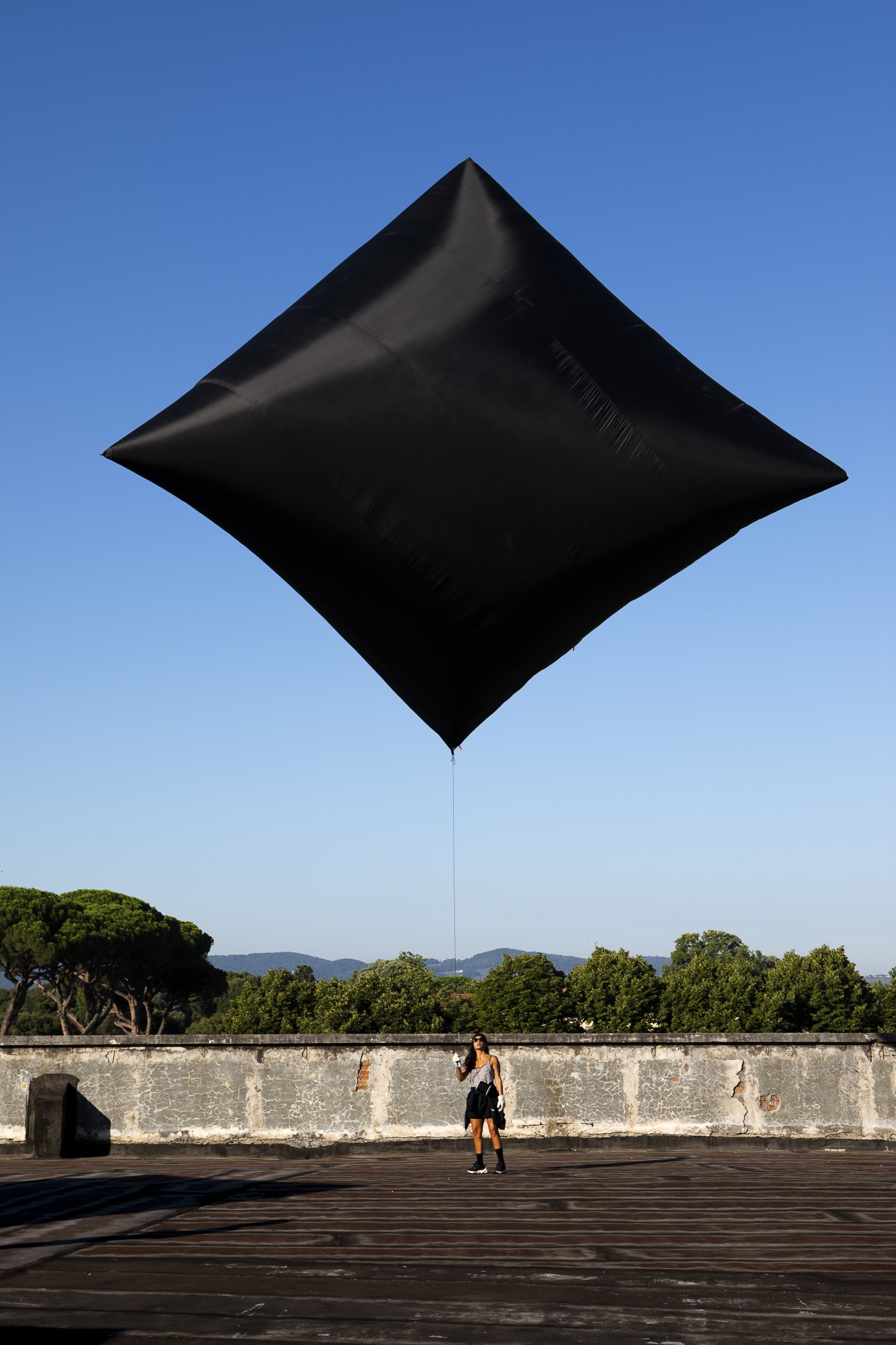
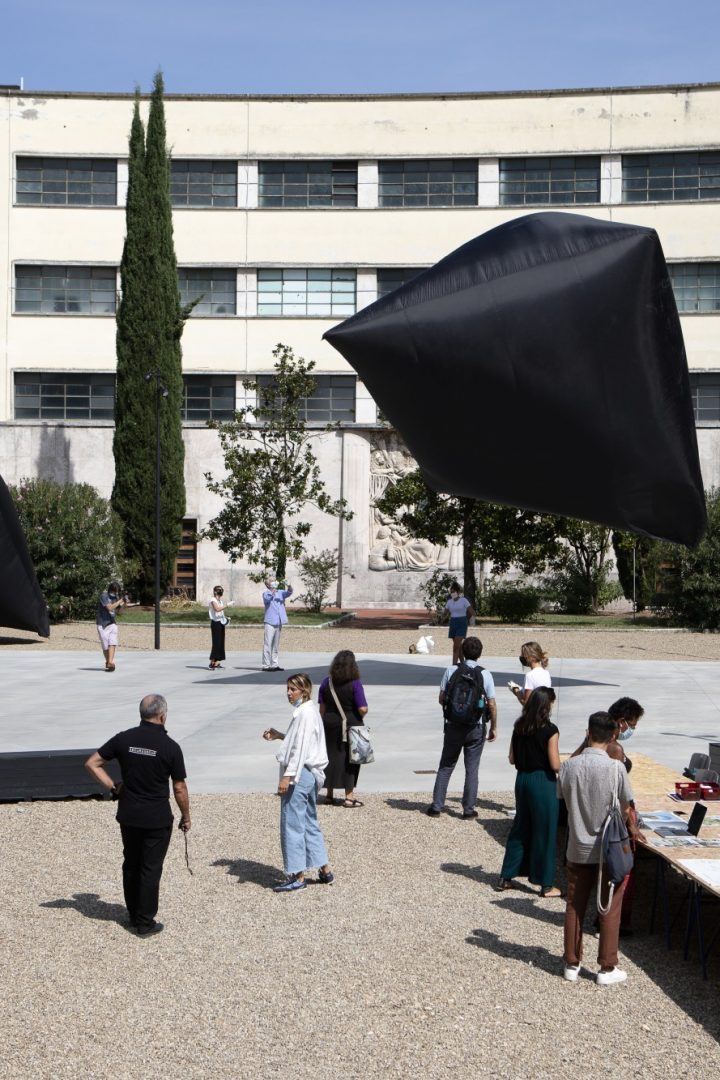
In the words of Martino Margheri, Aerocene Pilot, Education Coordinator at Fondazione Palazzo Strozzi and organizer of Aerocene activities in Florence:
“We had such a great experience in Florence during ARIA Days at Manifattura Tabacchi.
Since the workshop with the representatives of Aerocene Foundation, Alice Lamperti, Lorenzo Malloni and Joaquin Ezcurra in July, we really enjoyed working altogether and delve ourselves into the community attitude of Aerocene endeavours and share with a broader public a new engagement with the air and the atmosphere.
During the Aerocene Pilot Course, we have been able to deliver a powerful message to the Florentine community, as many people participated and asked about organizing further Aerocene events in the upcoming months.
Around 200 people launched the aerosolar sculptures enclosed in the Aerocene Backpacks and more than 1000 people attended the events of ARIA Days, uplifted by the mesmerizing flying sculptures.”
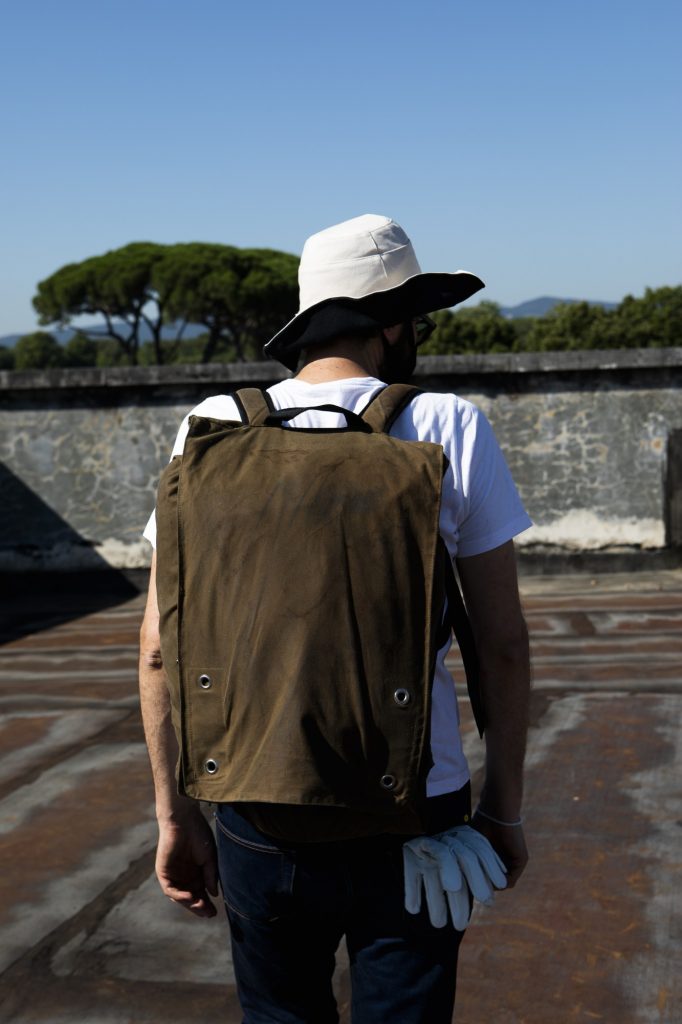
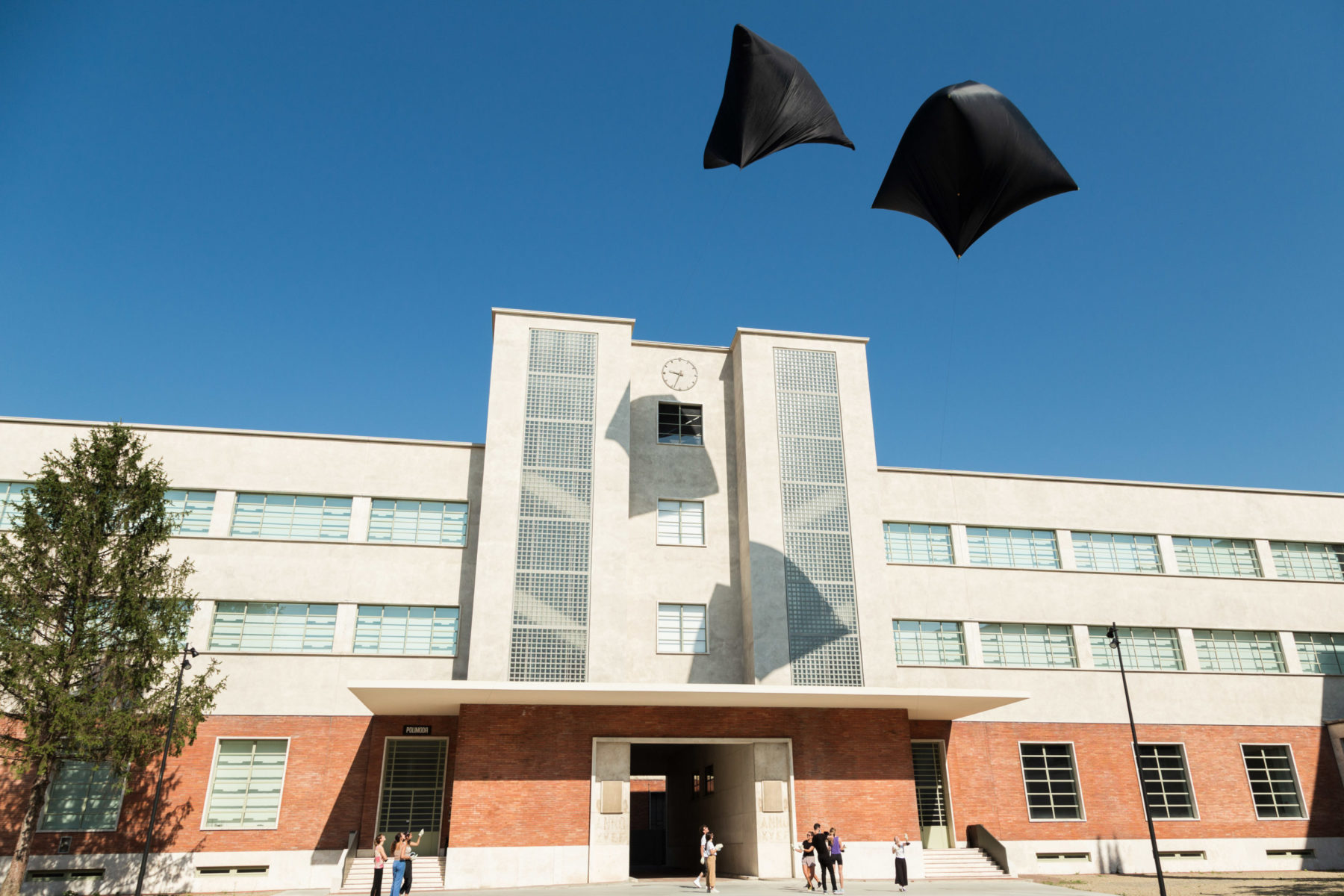
A group of 12 volunteers, Aerosolar Pilots officially trained by Aerocene Foundation’s coordinators Alice Lamperti and Lorenzo Malloni, worked side by side with Palazzo Strozzi’s team to engage with the audience and show a different way for flying, sharing with enthusiasm the possible futures to come within the Aerocene era.
During the workshop open to the public, the on-site team had to deal with a sunny but windy weekend: in order to have full control of the sculpture and guarantee safe flights for the pilots and the number of visitors in the courtyard of Manifattura Tabacchi, they all flew, together, one sculpture at the time, following the rhythms of the winds and the will of the atmosphere.
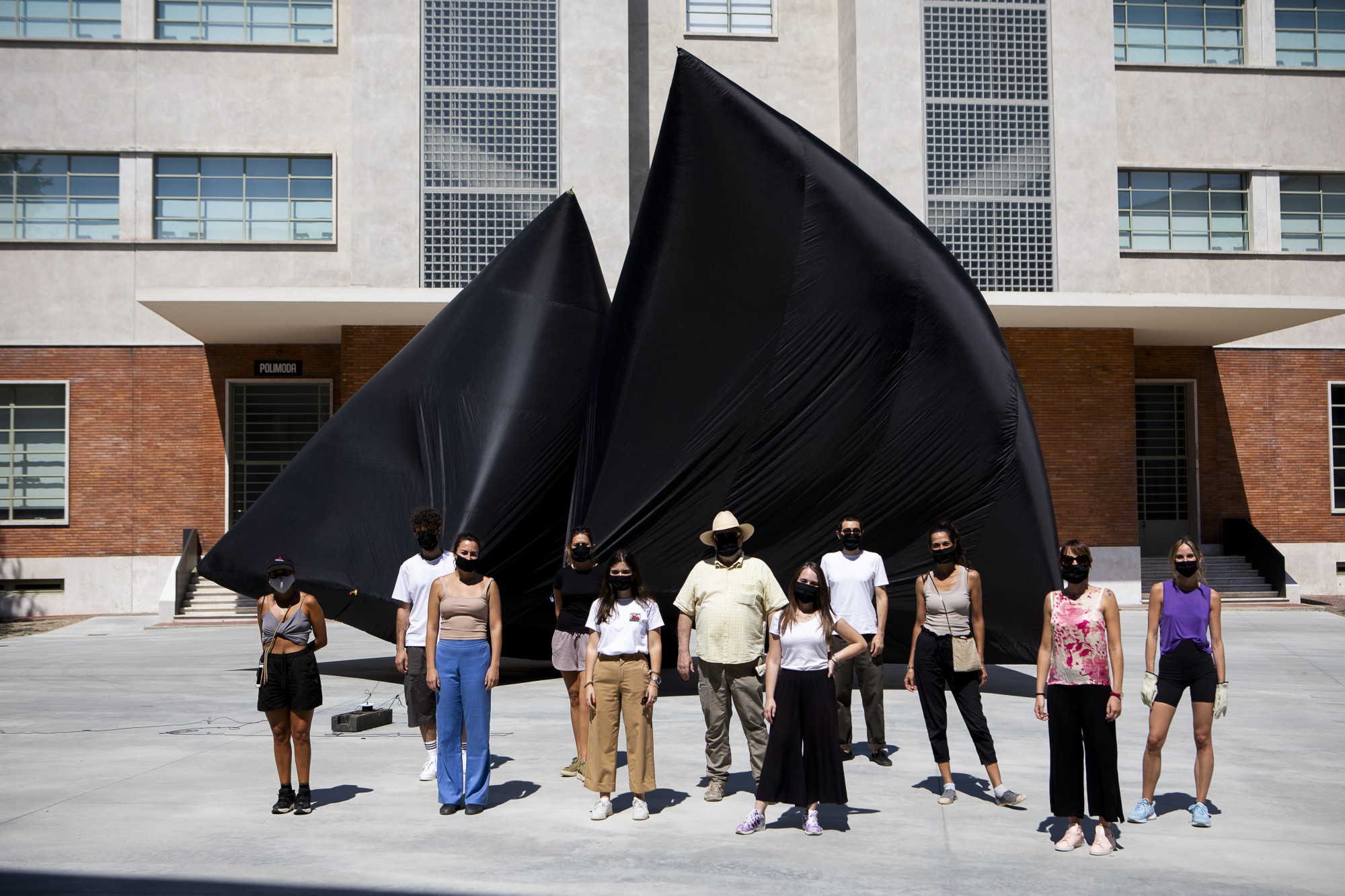
The Pilot Course for the volunteers promoted by Aerocene Foundation in collaboration with Fondazione Palazzo Strozzi was set up as an interdisciplinary workshop, a laboratory to sense di air differently.
The first approach with an Aerosolar Sculpture can be extremely powerful both in terms of our physical engagement with it, both concerning its connection with the invisible natural forces we live among – such as the air, the winds and the energy of the sun. Elements that in our daily routine may end up unnoticed in the majority of cases, especially in a city like Florence, an environment with a solid history of human-centric vision as the cradle of Humanism and the Renaissance.
Aerocene wants to inspire a different perspective, where the environment abandons its role of sole scenography, but becomes the protagonist, with all its elemental energies: to foster a shift in consciousness, rethinking what the futures to come could inaugurate a new Renaissance – Aerocene, an era for the Air, towards the independence from fossil-fuels based mobility.
If we think about the aerial perspective, whose studies were initiated in the very city of Florence by Leonardo da Vinci, it is based on the discovery that air is not an entirely transparent medium. According to Leonardo’s optical studies, moreover, the air is denser («una aria grossa più che le altre» – one air thicker than the others) the closer it is to the ground, while it becomes more transparent with height.
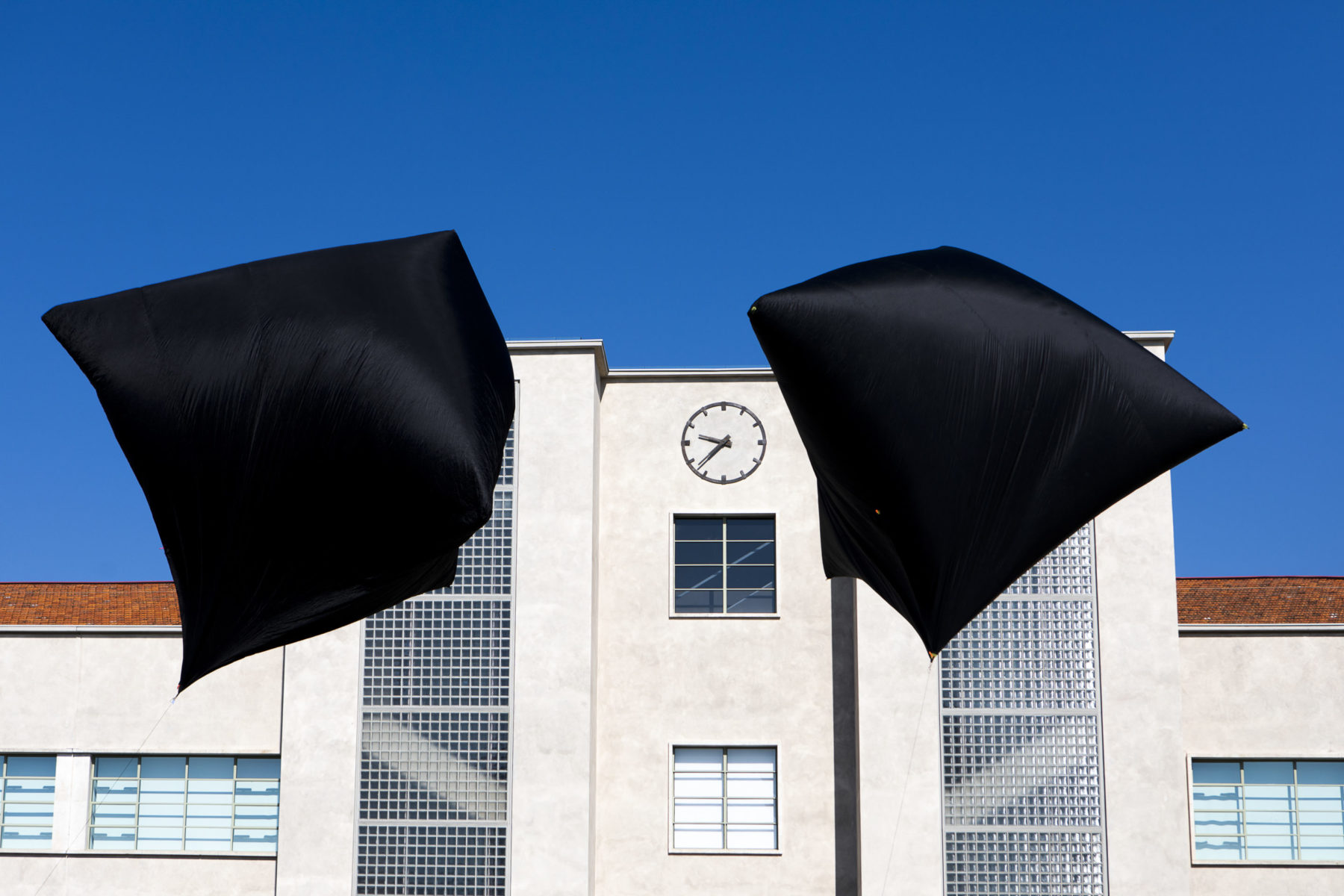
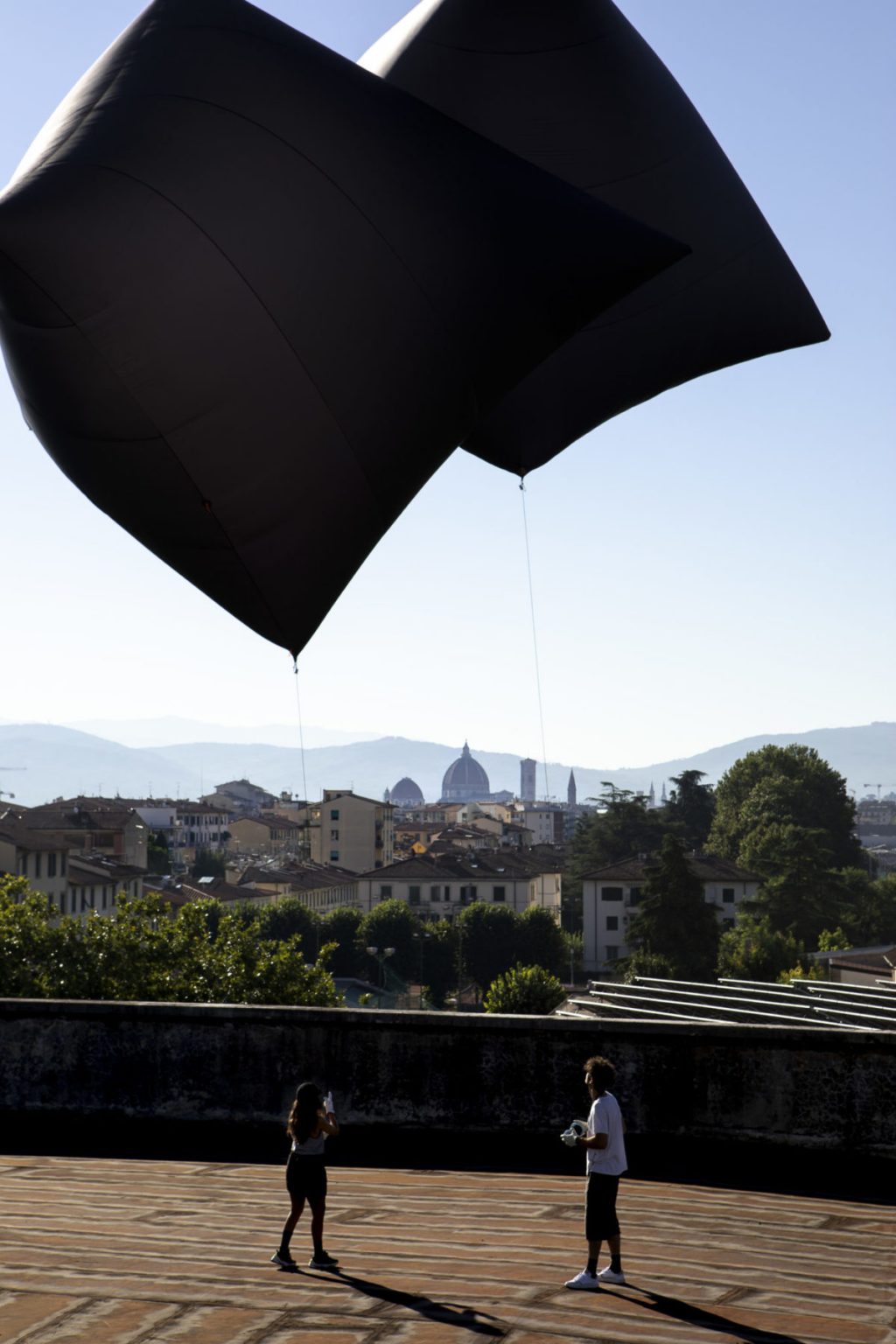
With the Aerocene workshop in Florence during ARIA Days, the aim was to trigger the volunteers and the public’ sensitivity towards the atmosphere and the planet, detaching from the ground to have a tangible view of the ocean of air at the bottom of which we all live.
The Pilot Course is based on learning how to launch an aerosolar sculpture in the air and the safety procedures that come with this action. The Aerocene Pilot Course is an entrance into the praxis of becoming aerosolar; attuning to the weather, collaboratively energising and activating the lift and drift of aerosolar sculptures in alignment with the Sun and winds, and drawing aeroglyphs with the air. A thinking-through-making activity, the Pilot Courses seek to open up the thermodynamic imagination through the boundless potential of energies, both elemental and of collaboration.
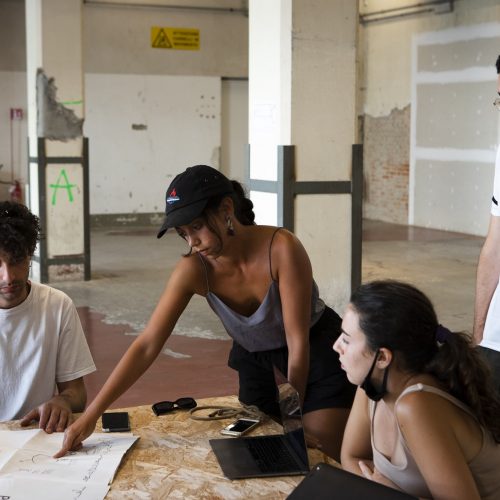
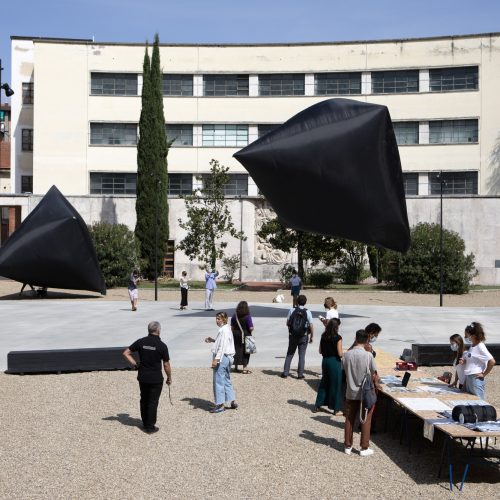
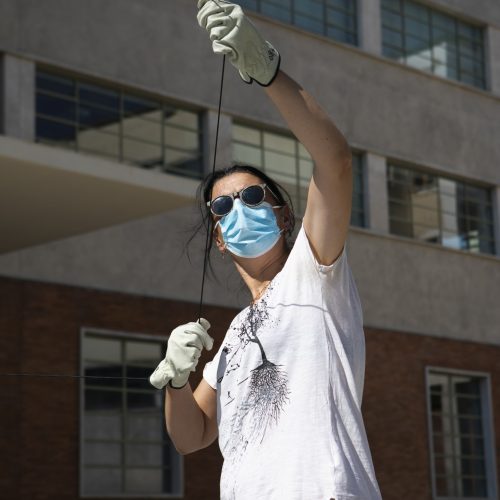
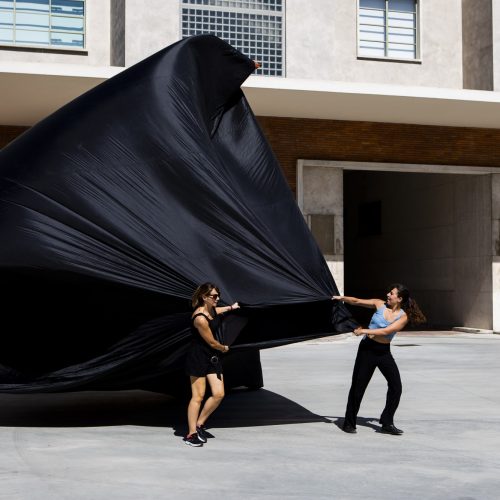
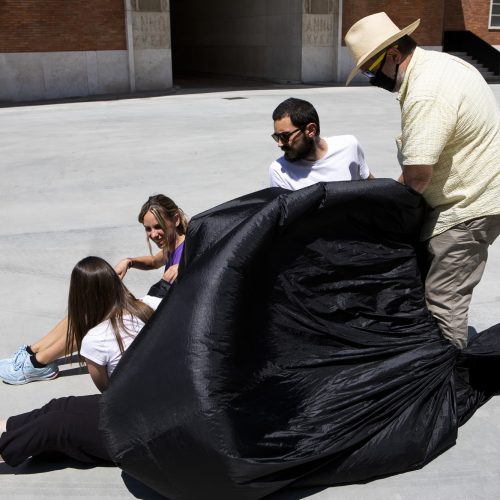
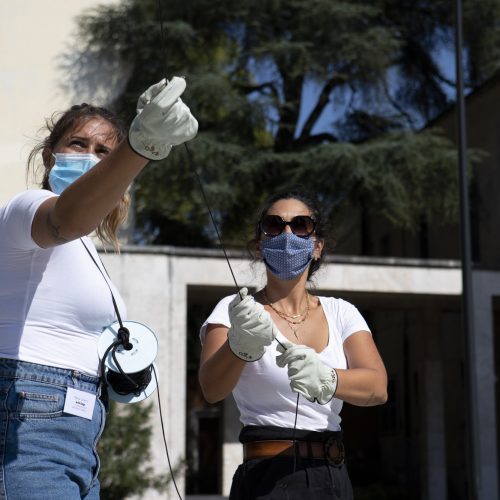
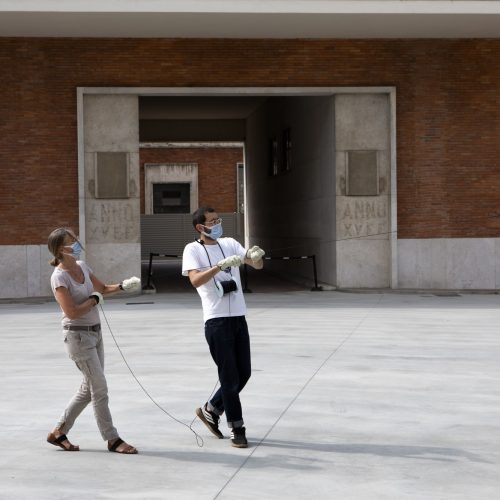
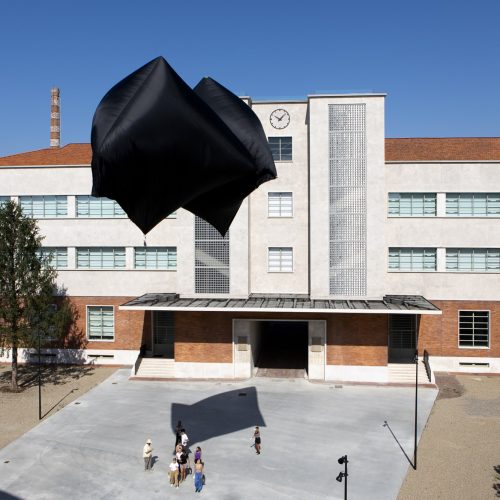
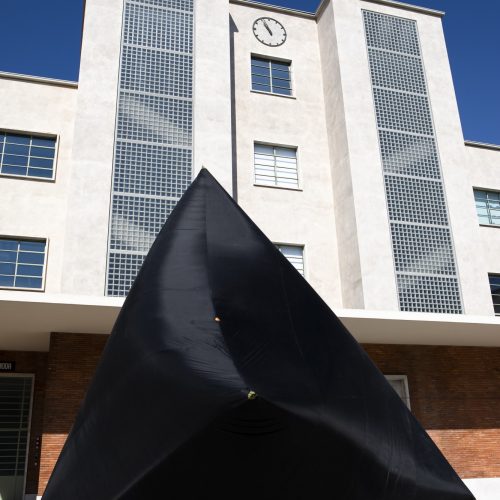
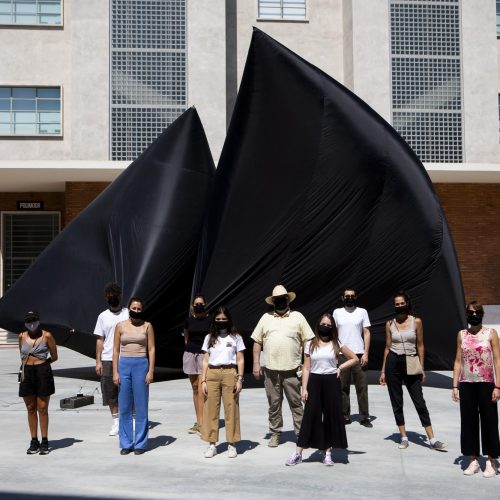
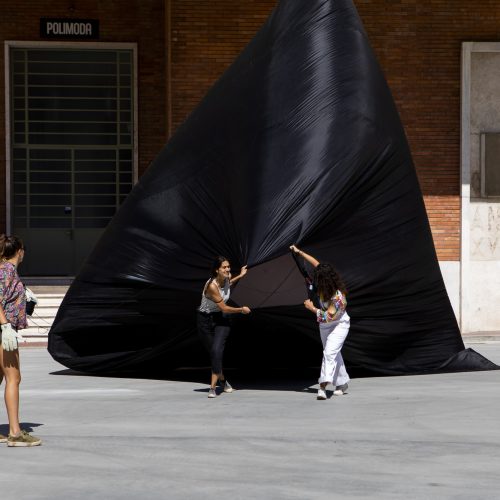
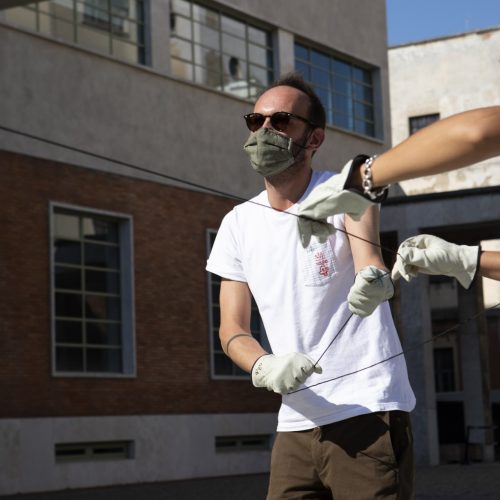
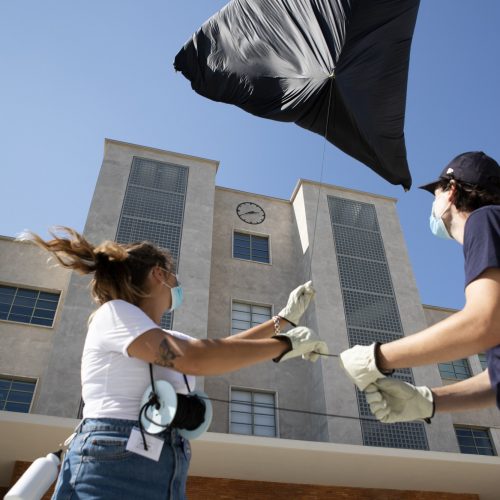
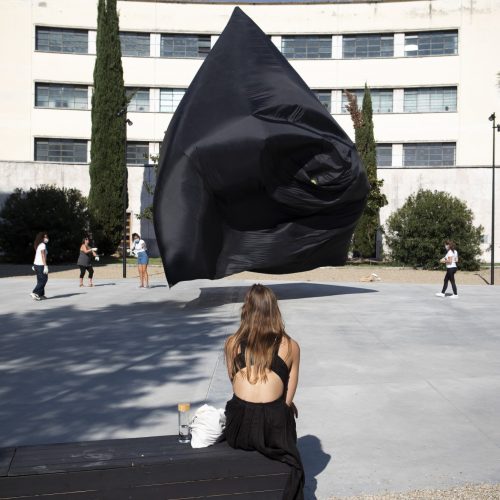
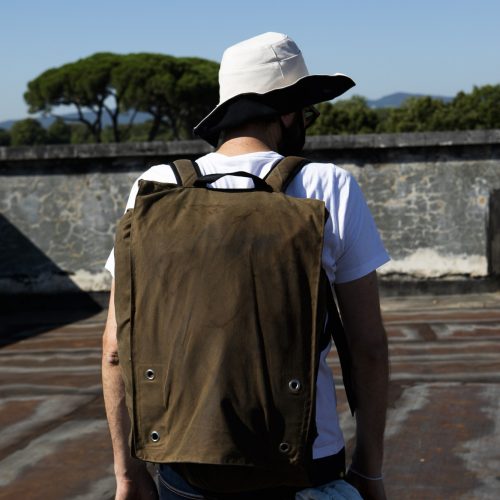
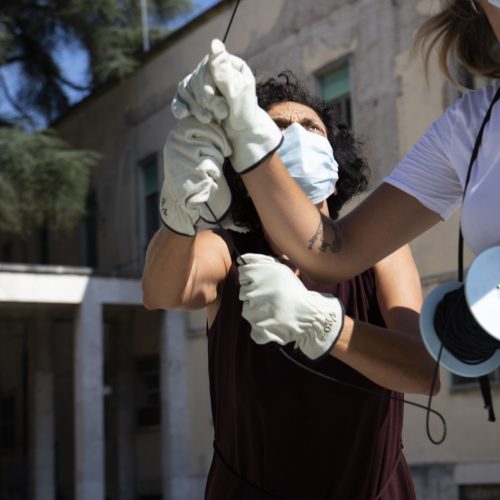
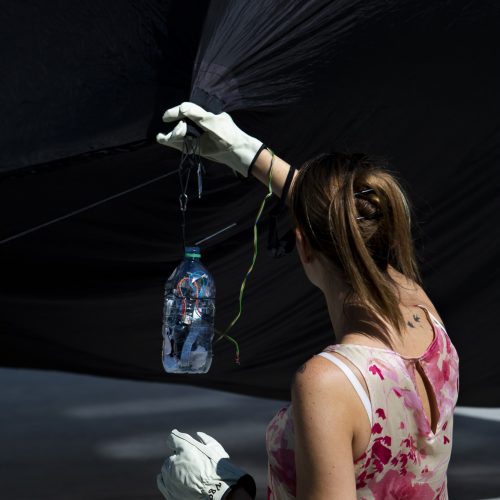
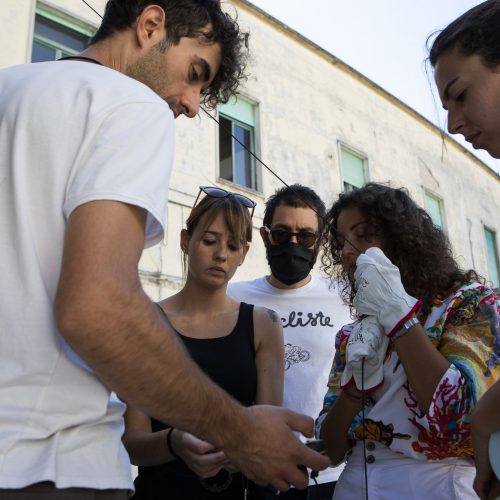
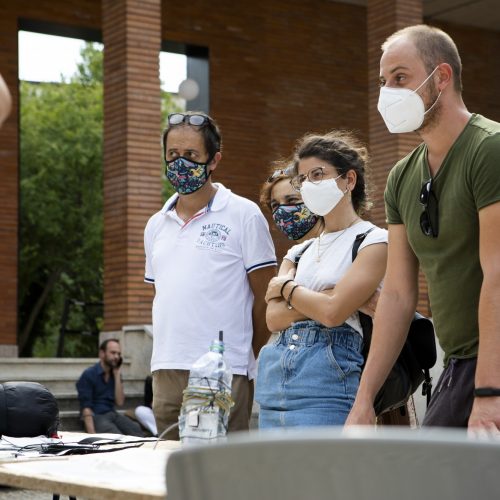
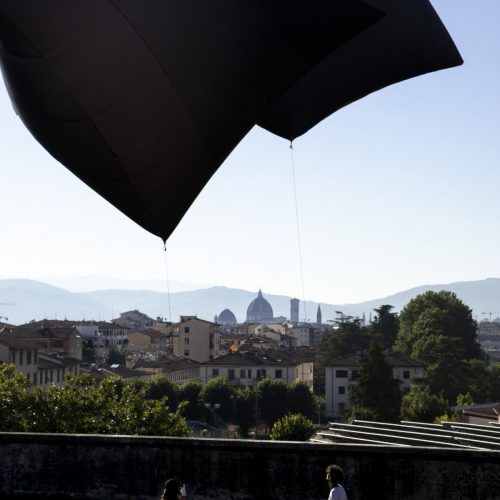
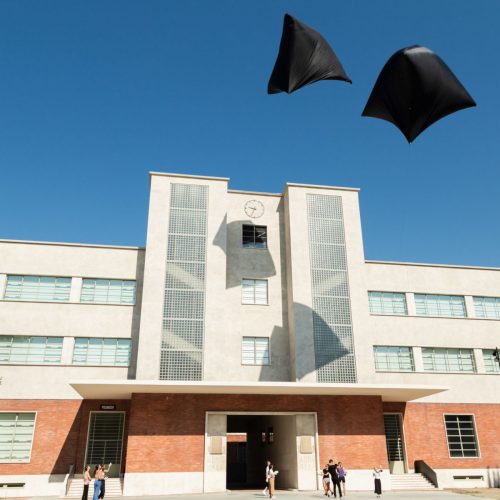
Every aerosolar sculpture, while on air, can be equipped with the SensAIR, the sensing kit enclosed in the Aerocene Backpack, a tool for perceiving and measuring atmospheric properties collaboratively developed by the Aerocene community.
Contained within a reused plastic bottle, a Raspberry Pi single-board computer connects to a Raspberry Pi camera, a BME280 pressure/humidity/temperature sensor, a solar battery back, an SD card, and a WLAN stick (USB 2.0). It can also include Motion Trackers and Particulate Matter Sensors.
Prior to list off, the device is attached to the sculpture and enables the gathering of aerial pictures and atmospheric data, such as temperature, humidity and pressure, along with air pollutant measurements.
Fully open-source via the GitHub repository, the SensAIR enables the low-cost, non-intrusive, emissions-free scientific study of airborne matter, and encourages citizen-science approaches to atmospheric investigation.
The motion tracker embedded in the SensAIR is able to record the movements of the floating sculptures, the invisible traces left by it – the Aeroglyphs.
Like handwriting or fingerprints, the swirling trace that follows any Aerocene flight is unique. While eagerly adapting to the ever-changing rivers of the wind, atmospherics laws and weather conditions, aerosolar spheres create signatures in and of the air. In contrast to fuel-powered flights that leave behind visible, straight lines in the sky, the trajectories of an Aerocene float are invisible to the eye.
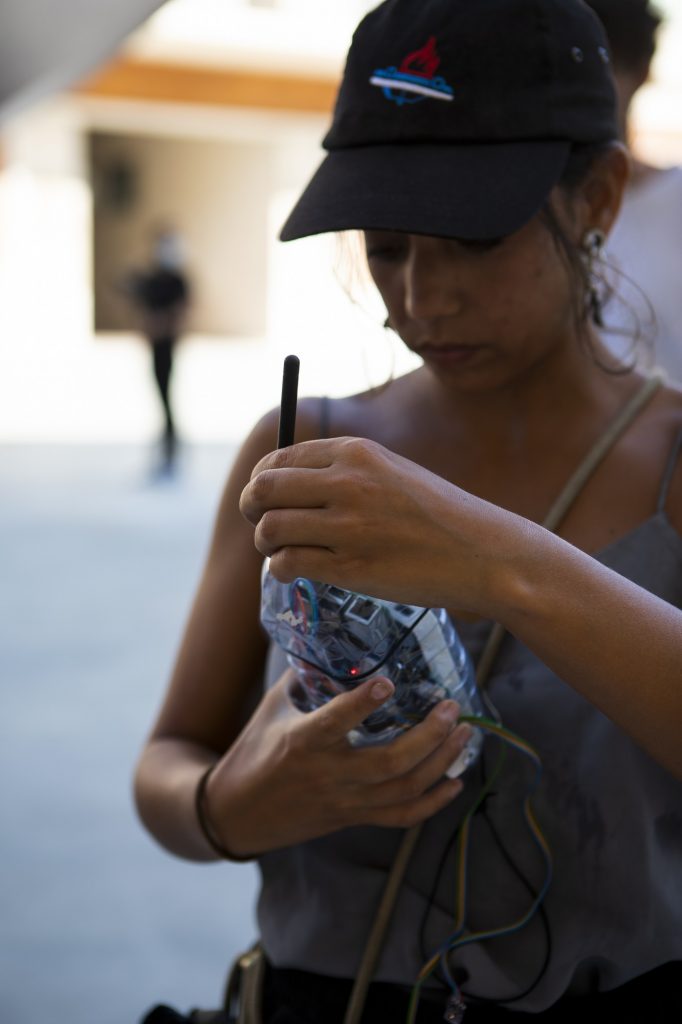
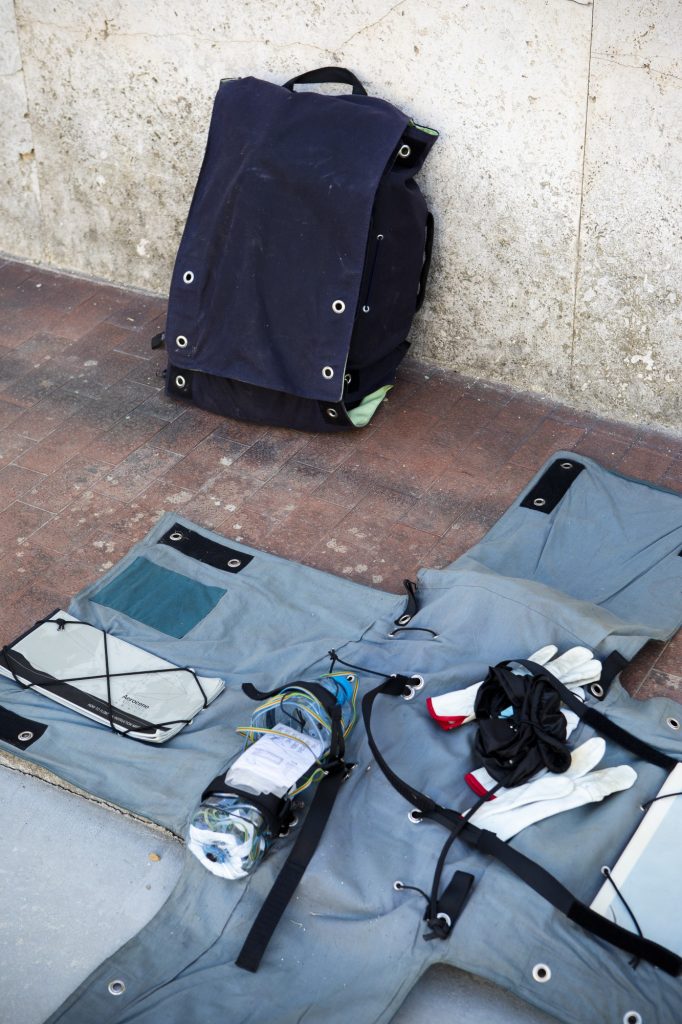
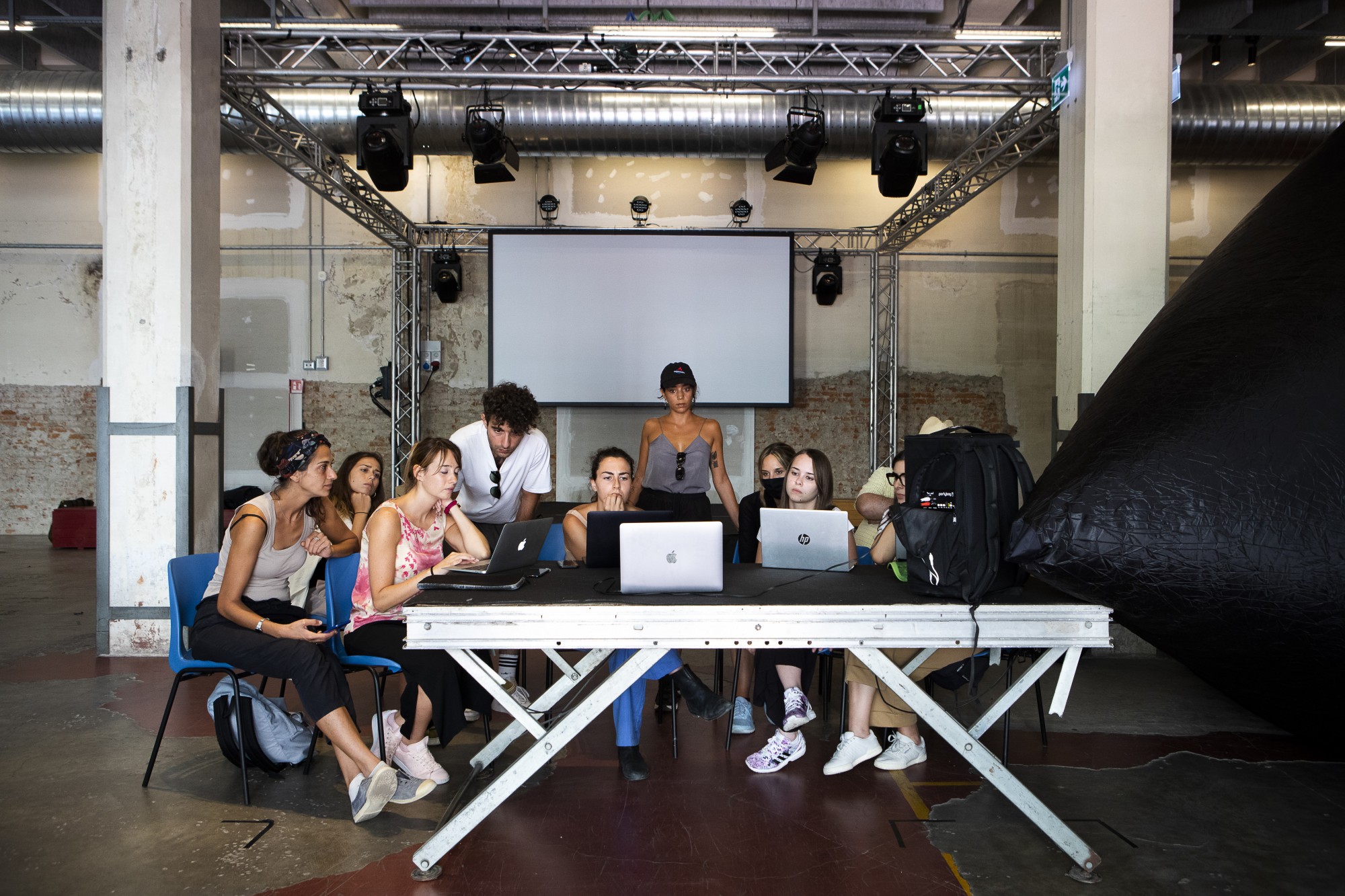
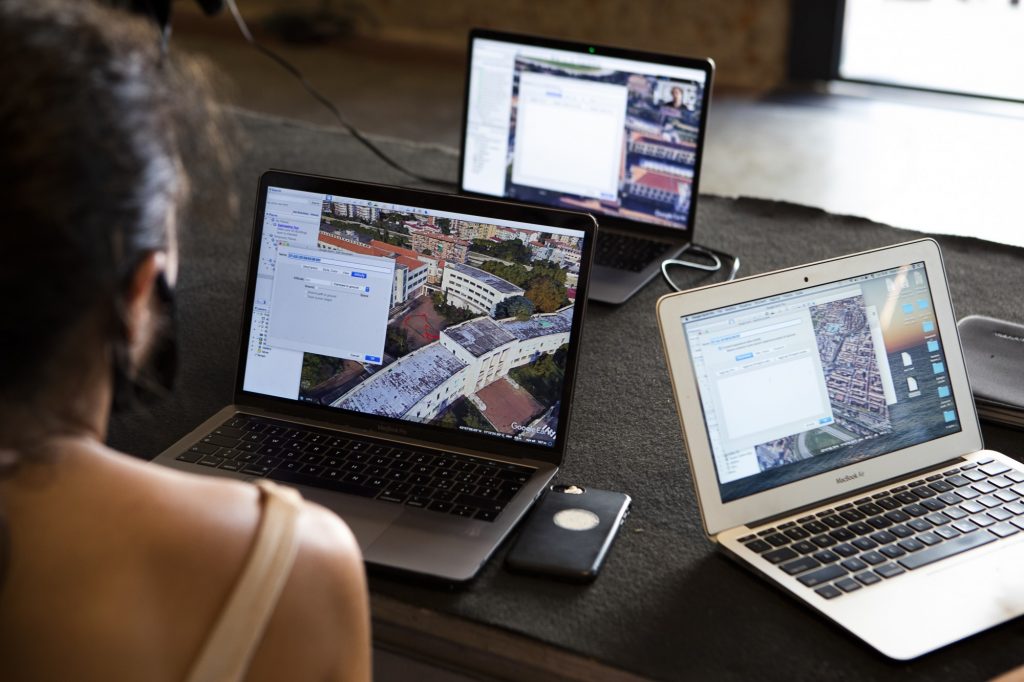
With every launch, the participants have been able to record the flight trajectories and subsequently, thanks to Joaquin Ezcurra – Aerocene Foundation’s Aerial Data expert – visualize them in digital form. The objective was to understand the basics of the collected data: GPS coordinates, atmospheric pressure and its relation to altitude, and then process this information into an artistic visualization.
During the workshop, participants have been able to sort and analyze the information collected by the airborne sensing device from scratch, by compiling the source info on a CSV file, through an open-source spreadsheet application. Then, the GPS values have been pasted into a sample KML file through a text editor application, following examples downloaded from Aerocene’s Sky Hole Mark Up repository on GitHub. Later, each KML file has been uploaded into the Google Earth Pro (Free) application for visualization of each aerosolar sculpture’s Aeroglyph.
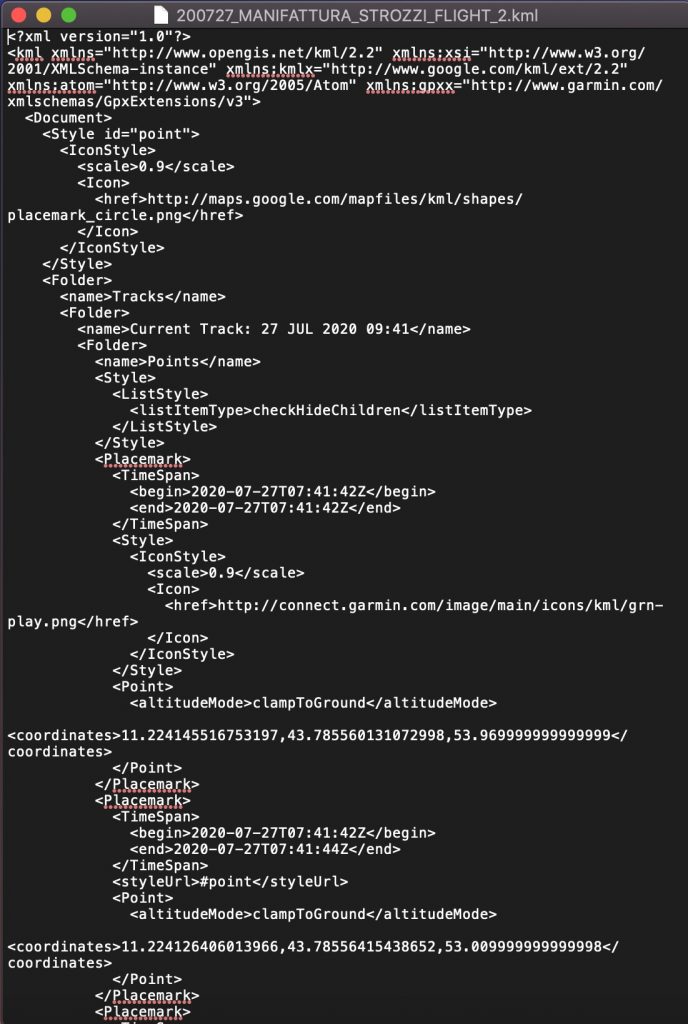
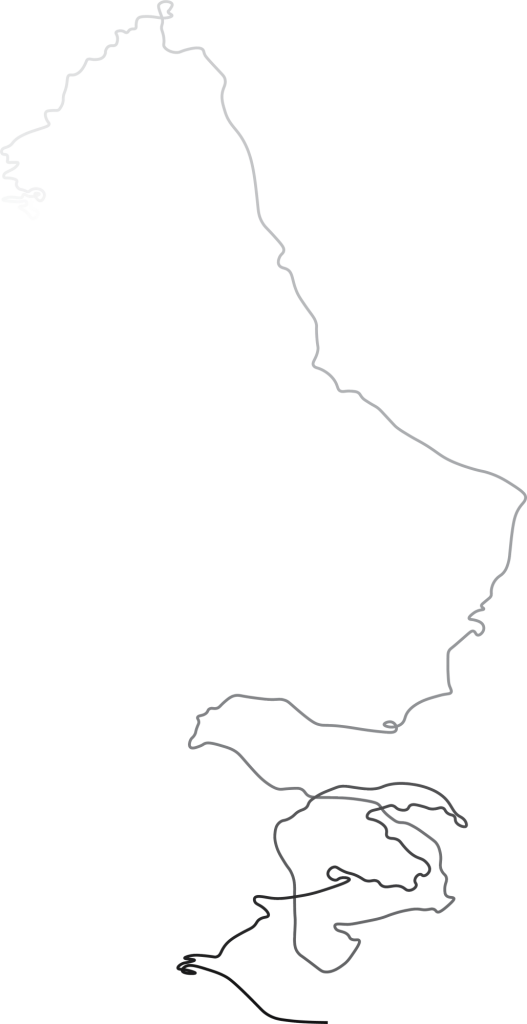
Aeroglyph AT 200727, Florence, 2020
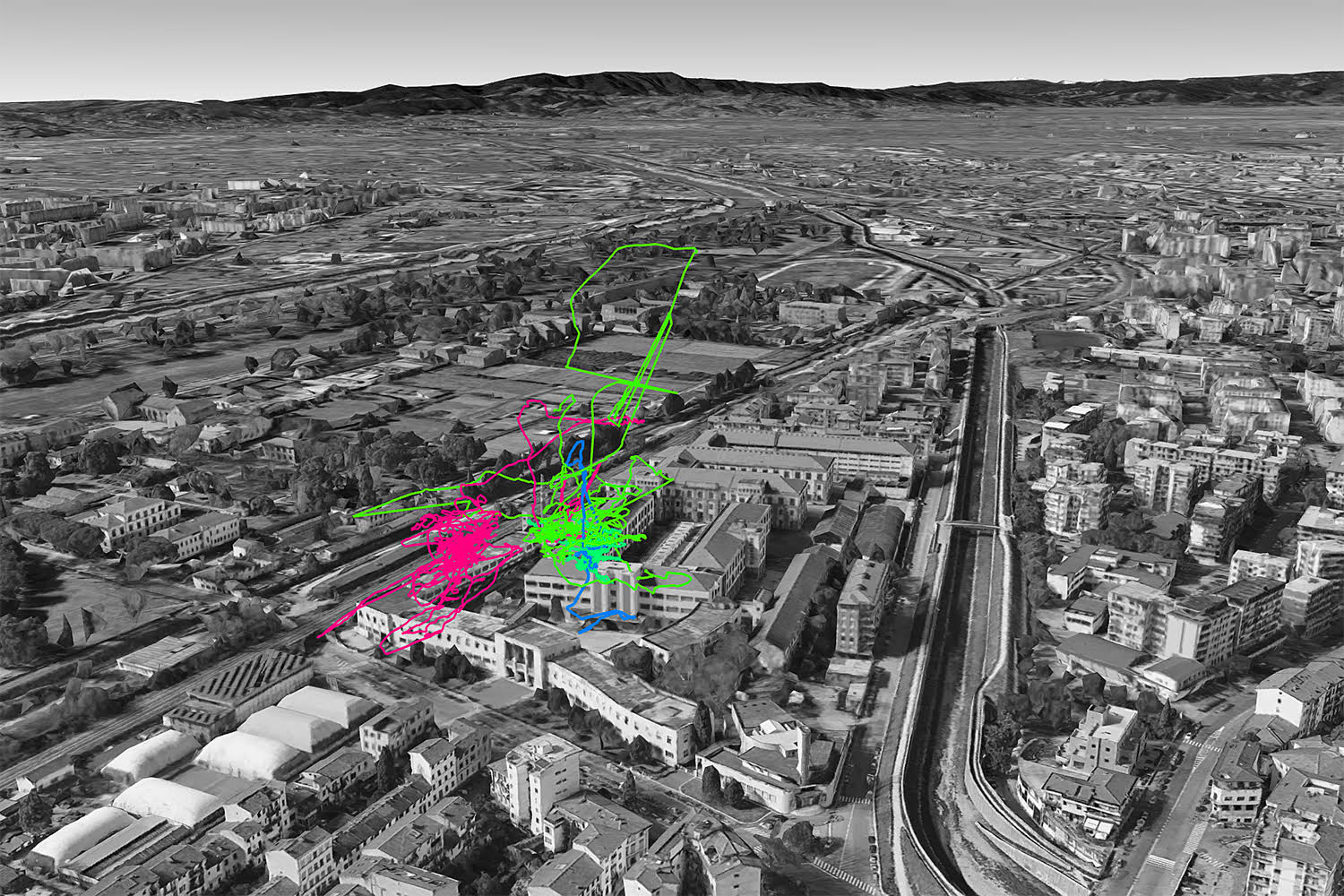
Aeroglyph AT 200726, AT 200727, AT 200728, G-Earth view, Florence, 2020
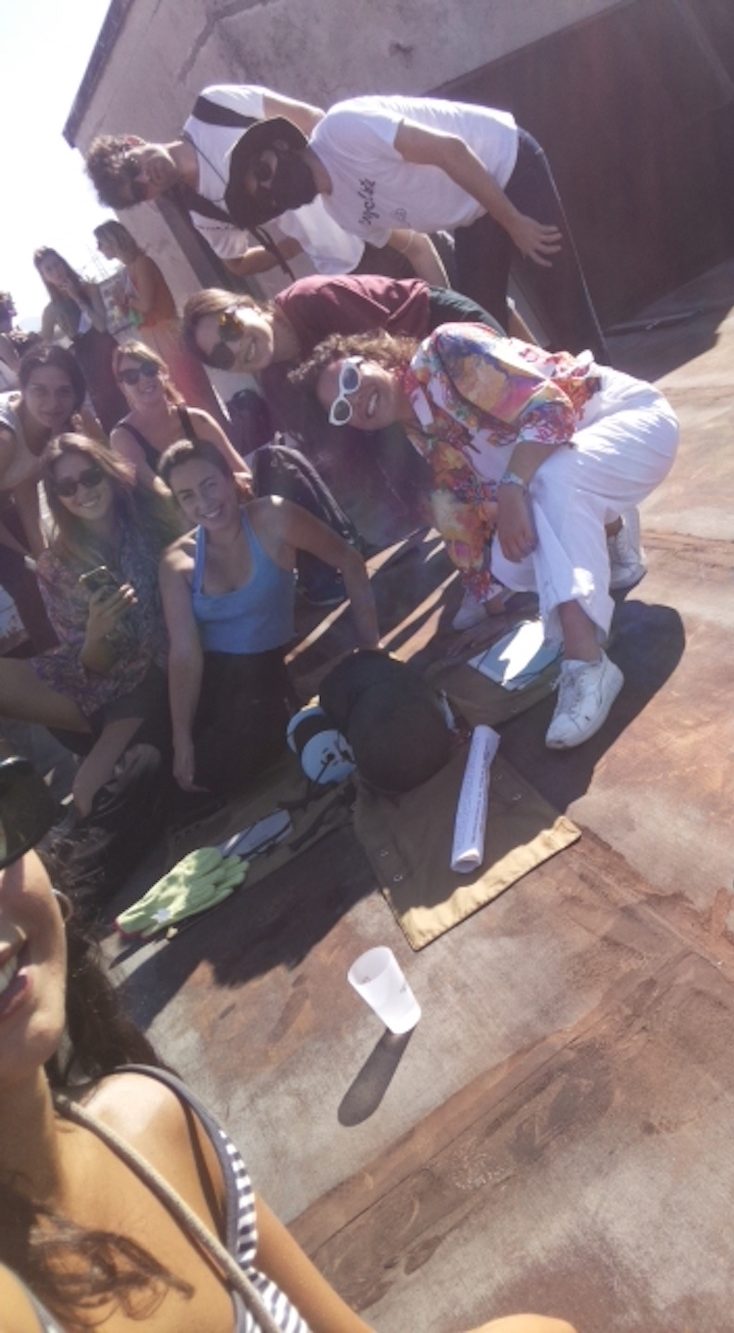
Aerocene Certified Pilots, Class of 2020, ARIA Days, Aerial Pictures, SensAIR, Florence, 2020
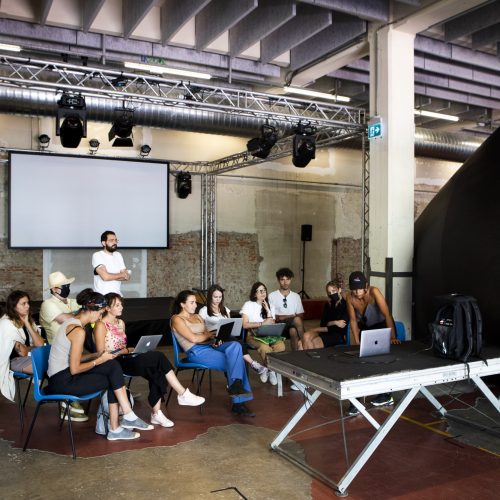
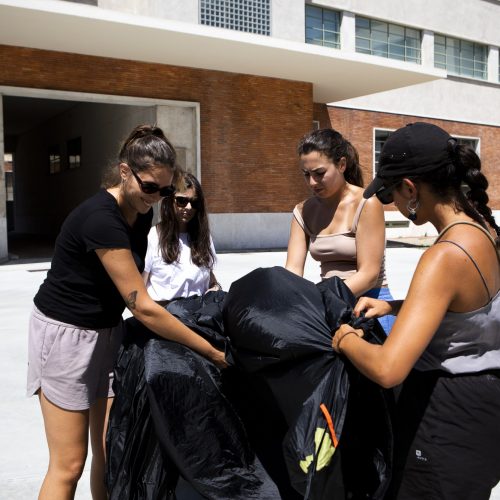
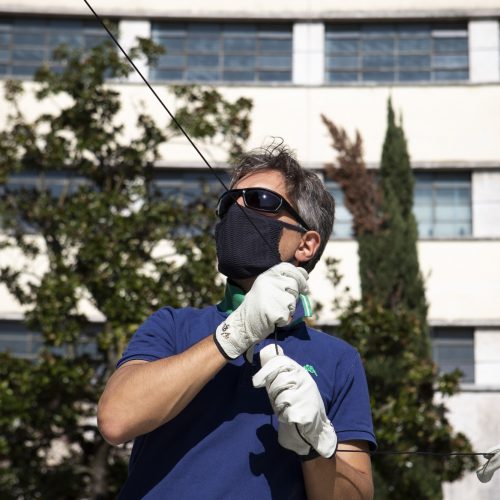
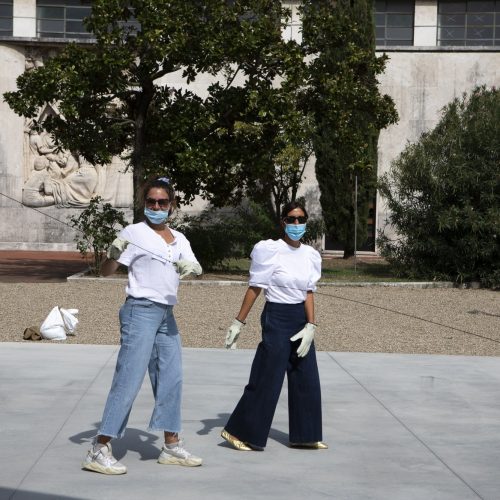
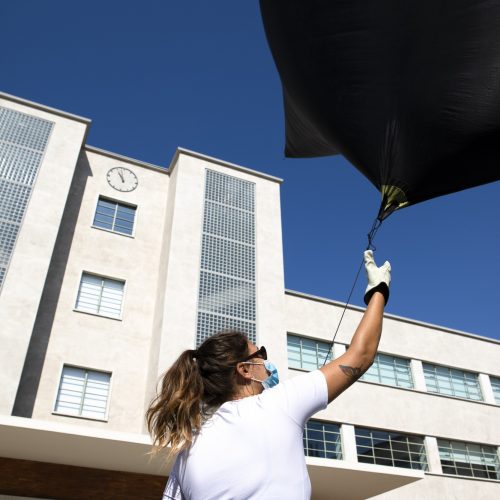
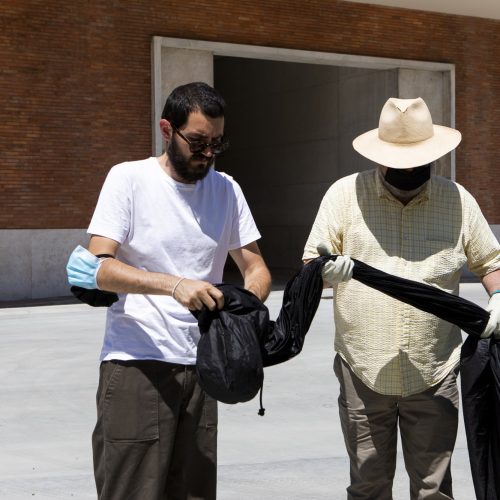
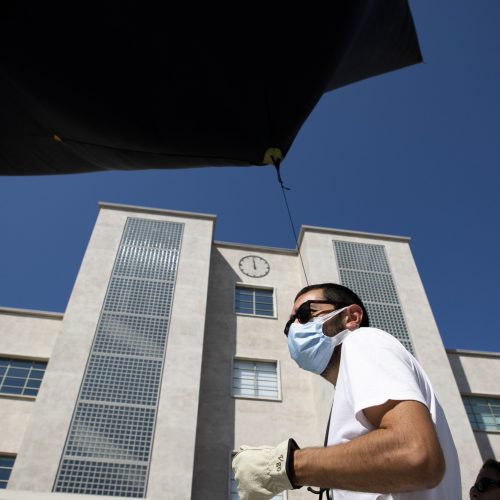
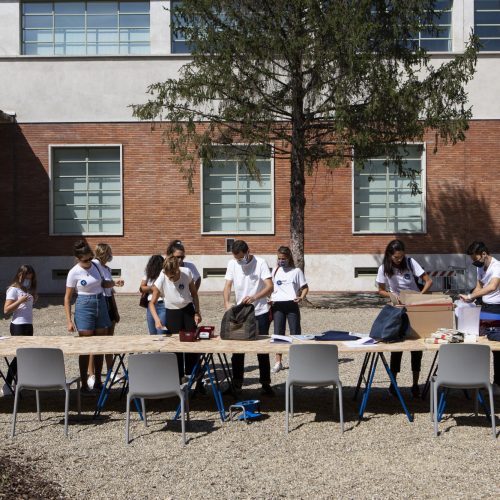
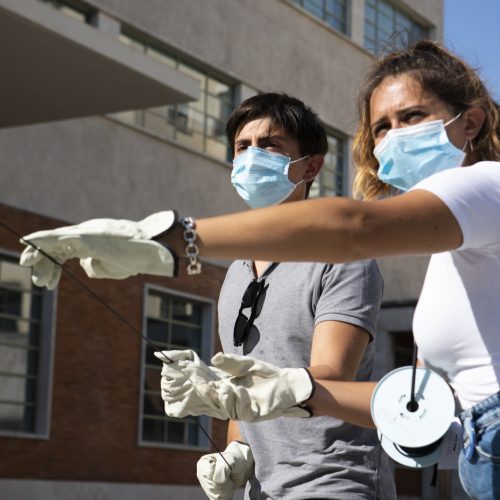
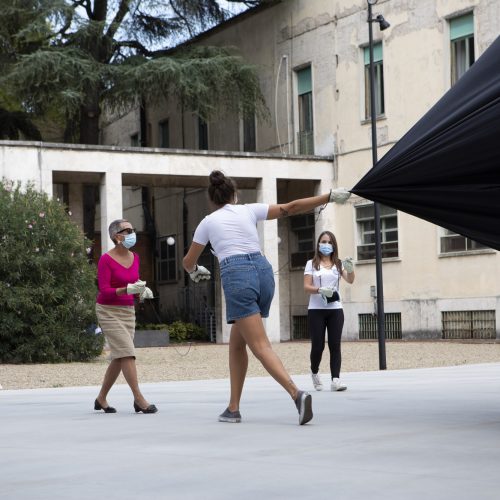
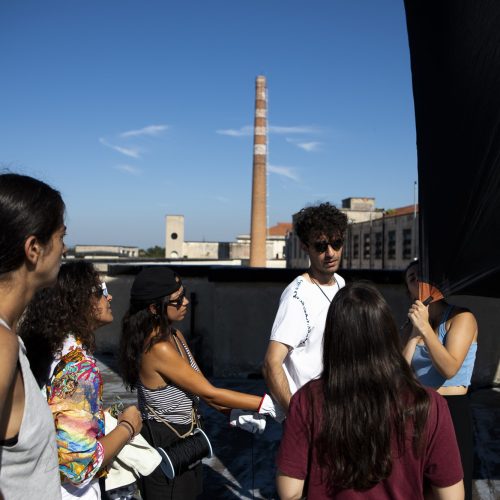
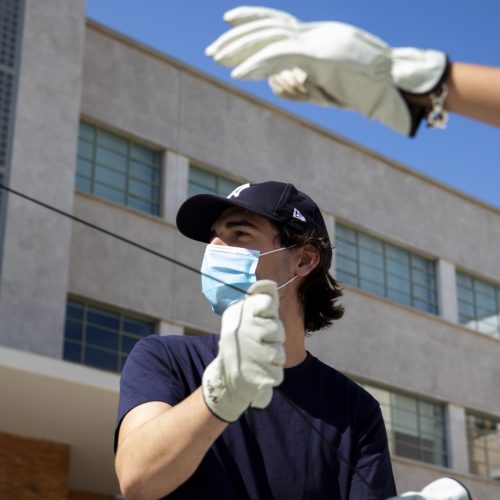
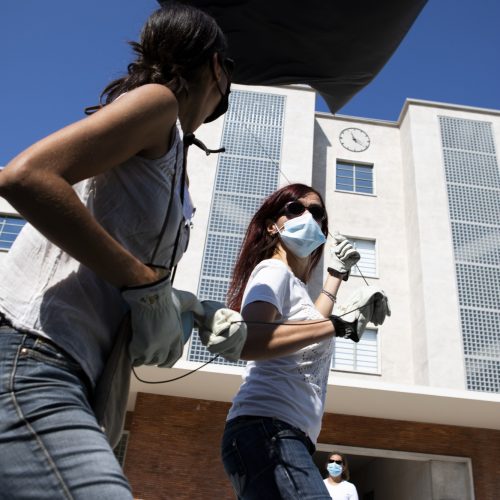
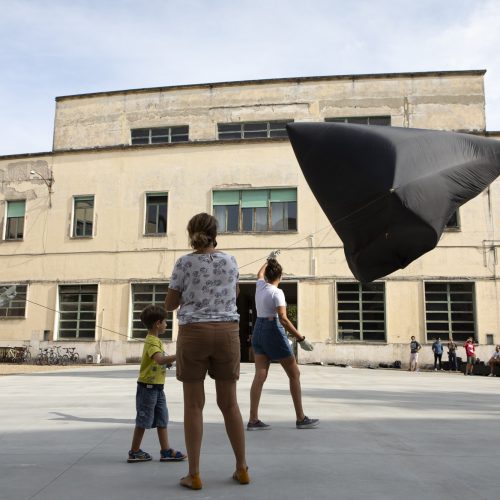
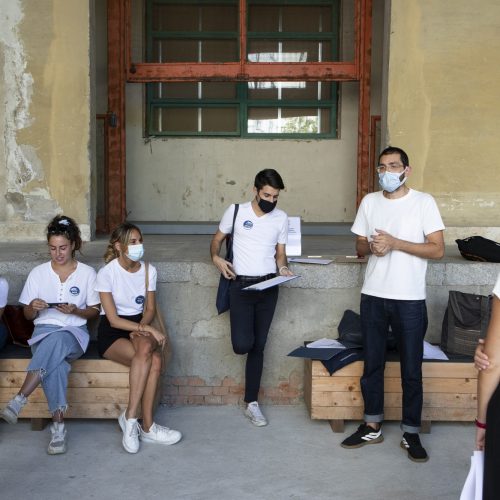
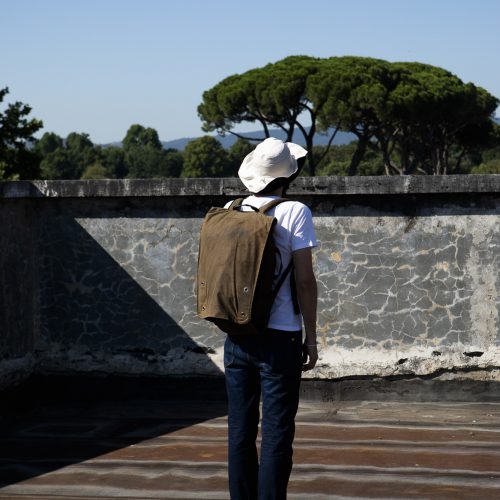
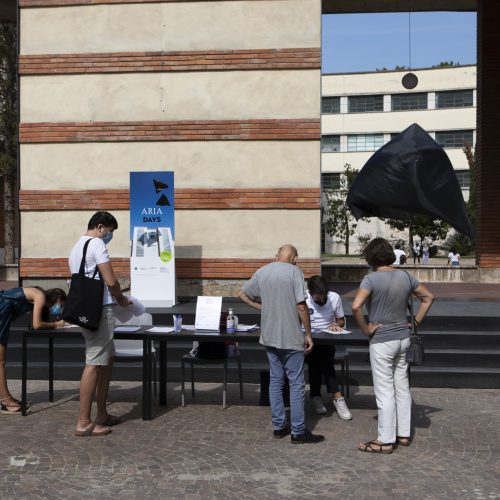
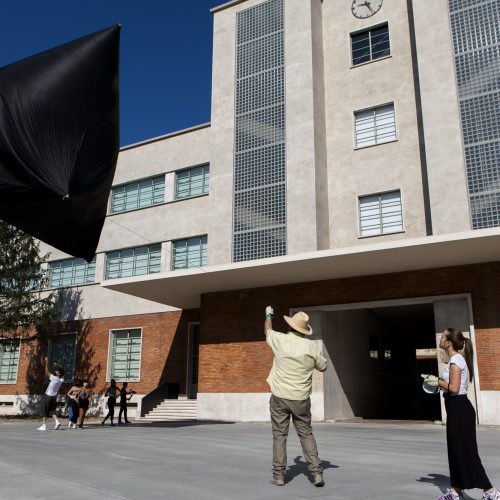
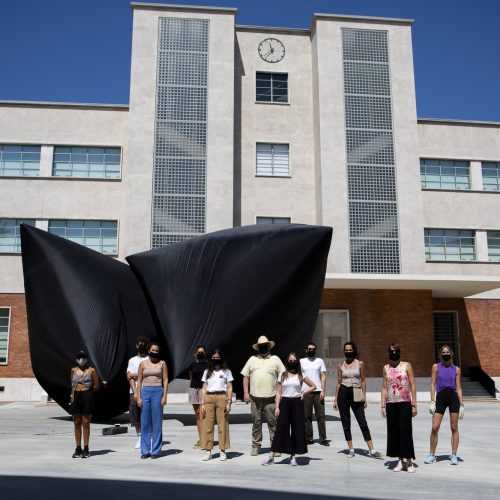
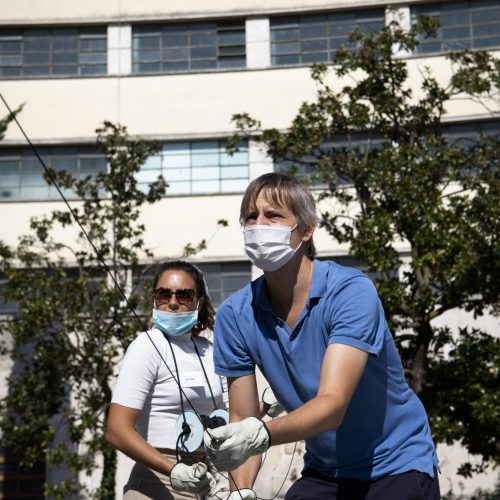
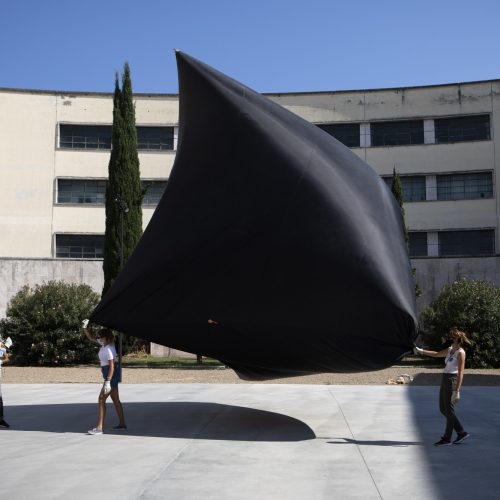
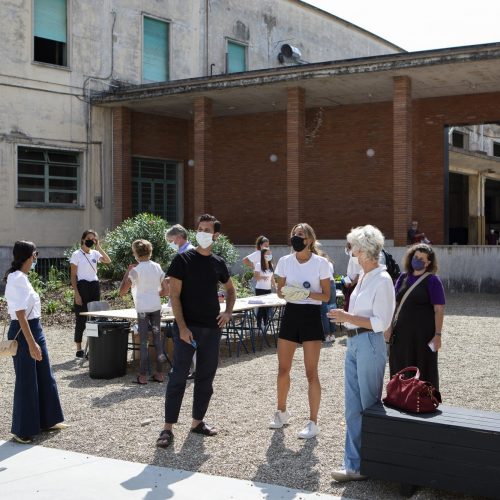
Congratulations to all new certified pilots and participants for the amazing collective achievements of ARIA DAYS.
Special thanks to Martino Margheri and Riccardo Lami for the invaluable support and energy invested in making the Aerocene landing in Florence a reality, together with Arturo Galansino Director General Fondazione Palazzo Strozzi and the entire team of Manifattura Tabacchi.
Applause to all volunteers for the enthusiasm and care demonstrated during the workshop! In aerial order: Maria Camilla Palleschi, Sara Gavagni, Marta Lorenzi, Silvia Villafranca, Federica Pascarella, Giampaolo Irtinni, Marianna Di Rosa, Chiara Martini, Mariasole Monaci, Fiamma Batini, Federica Giglio.
Photo Credits: Aerocene launches, 2020, Manifattura Tabacchi, Firenze, as part of exhibition Tomás Saraceno. Aria, Palazzo Strozzi, Firenze. All photos by Giancarlo Barzagli. Licensed under CC BY-SA 4.0
Video Credits: Alex Torres and Ugo De Berti – UDB Studio Licensed under CC-BY-SA 4.0
Aerocene Futuros Posibles Tigre
El 13 de noviembre, Aerocene participó del festejo de los 130 años de la Escuela N° 8, Manuel Belgrano de Islas, fundada en el año 1889. También se celebró el día de la tradición y del isleño.
A partir de las 10 de la mañana fueron arribando las lanchas colectivas cargadas de chicos y maestros provenientes de distintas partes de la isla y de continente. Varias familias también llegaron en sus propias embarcaciones.
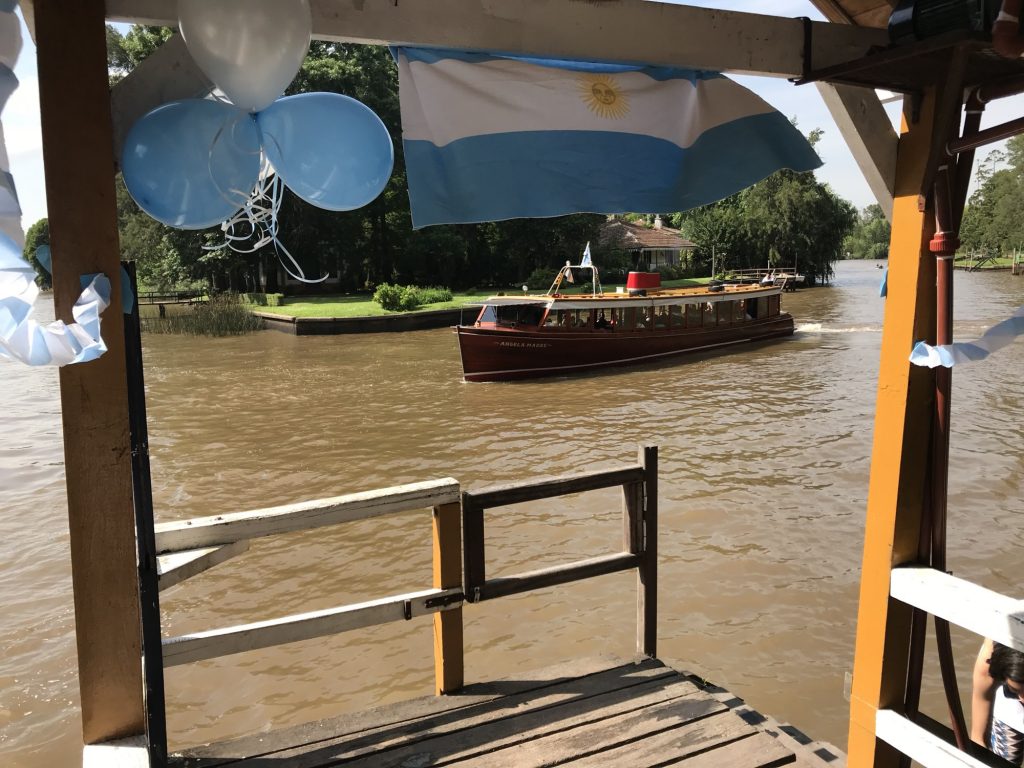
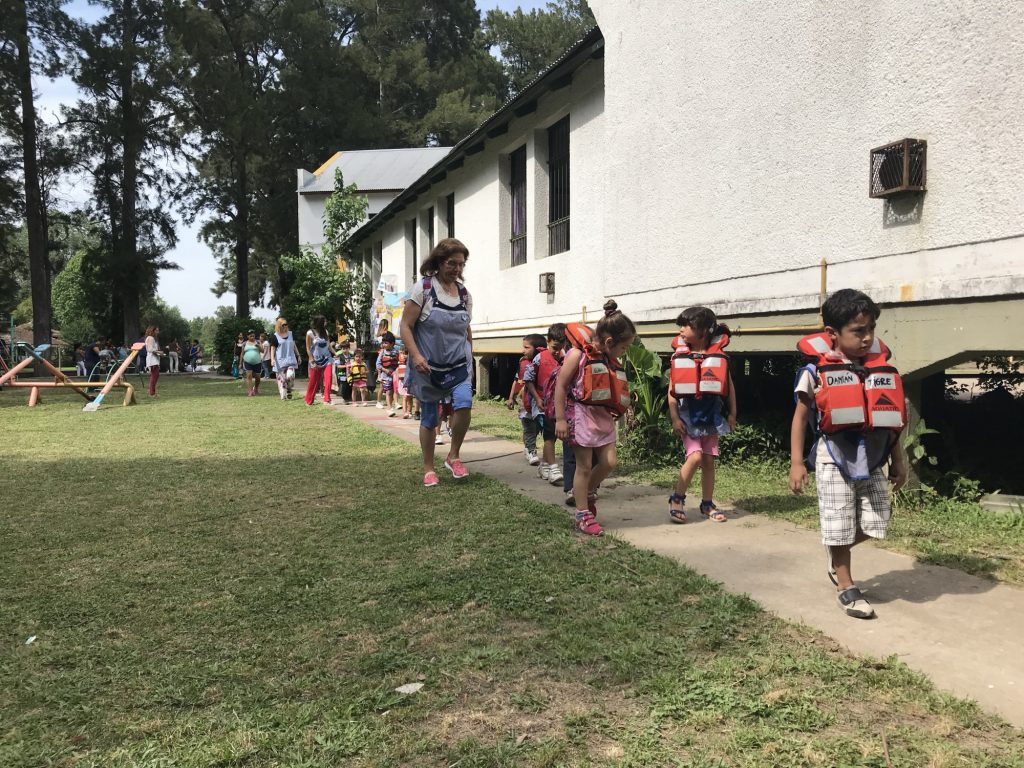
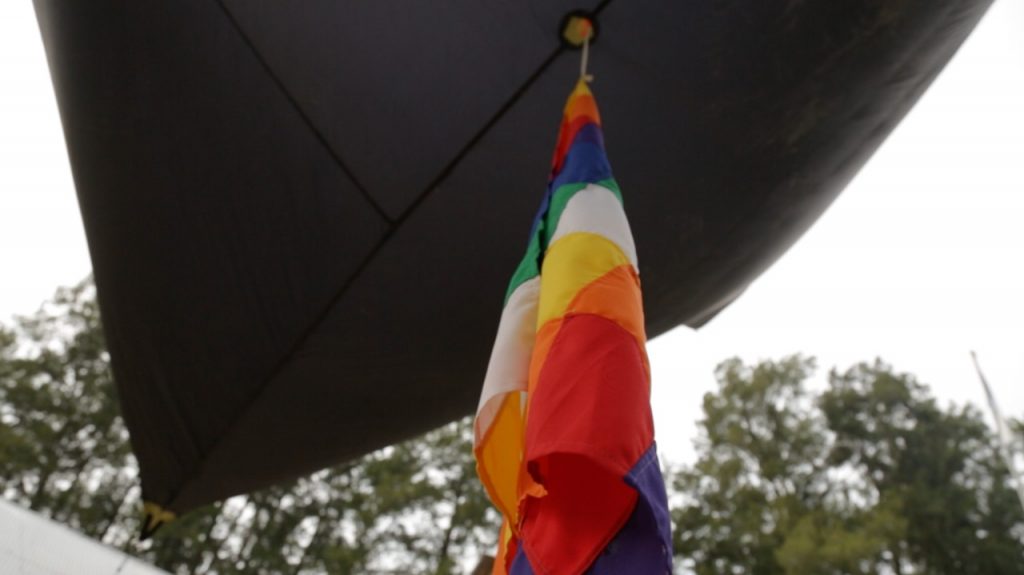
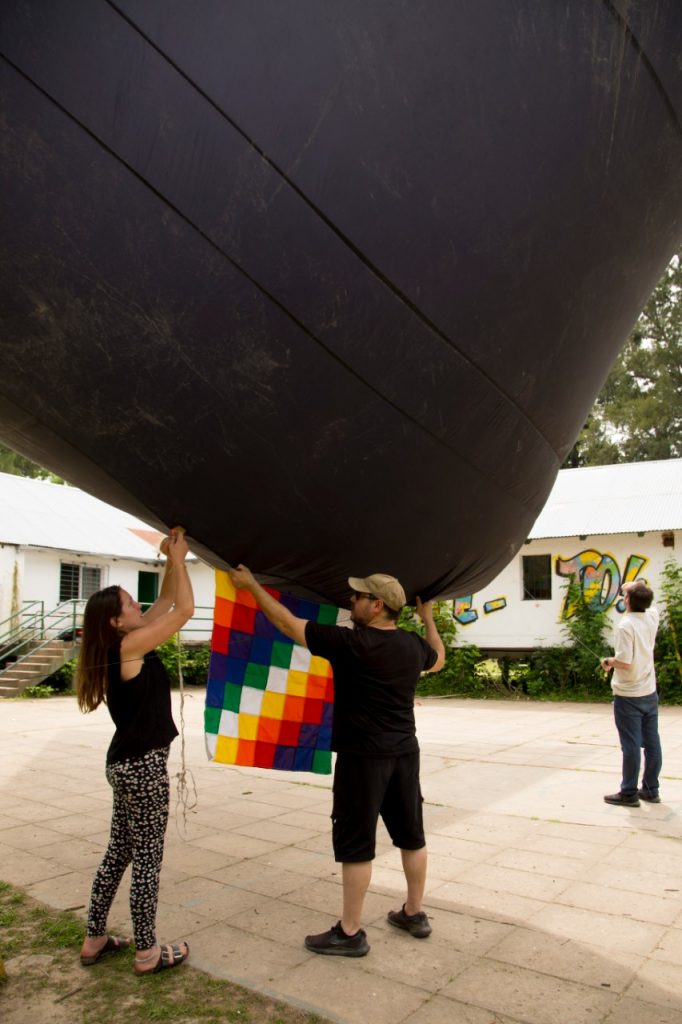
Cuando comenzó a sonar el himno, el primer globo Aerocene se elevó en el cielo flameando una wiphala, bandera del Estado Plurinacional de Bolivia como símbolo de hermandad con los pueblos andinos. Otro Aerocene voló con un gps para generar un aeroglifo, firma aérea en rechazo a los golpes de estado en América.
Durante el transcurso de la mañana se realizaron varias actividades. Guadalupe Boado de La Residuoteca junto con Ismael Romero Vargas de Agua alta dieron una charla sobre residuos y un taller de experimentación con botellas de plástico.
Mientras tanto, Amalia Boselli brindó un taller literario Futuro (s) posible (s) de “vuelo poético”, abierto a niñxs y adultos. A partir de cartas con palabras o imágenes alusivas al aire/cosmos/planeta/viento/sol/agua que se hacen volar en una alfombra mágica y cual cadáver exquisito se propuso un juego de crear una historia colectiva para hacer volar en el globo hacia otros mundos posibles. La actividad que propone Amalia se trata entonces de un taller de poesía en vuelo que invita, mientras los globos levantan vuelo, a levantar vuelo con nuestras imaginaciones.
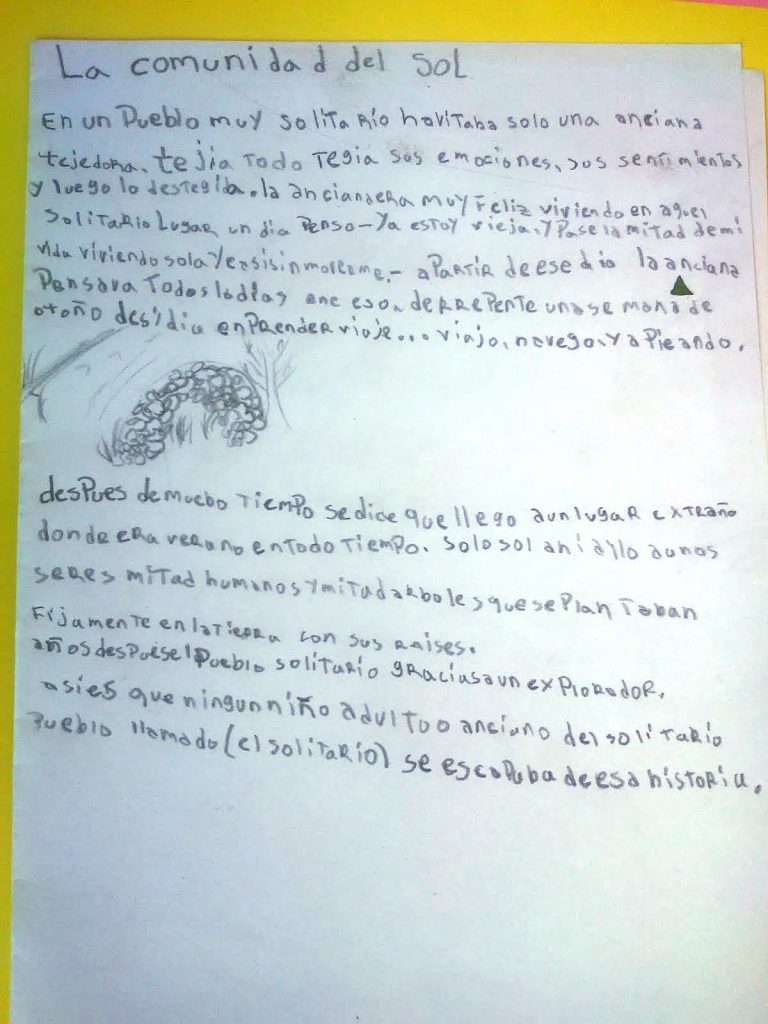
La Comunidad del Sol
Fue un texto que salió de las cartas que le tocaron a Lucía, alumna de sexto grado de la Escuela N˚ 8.
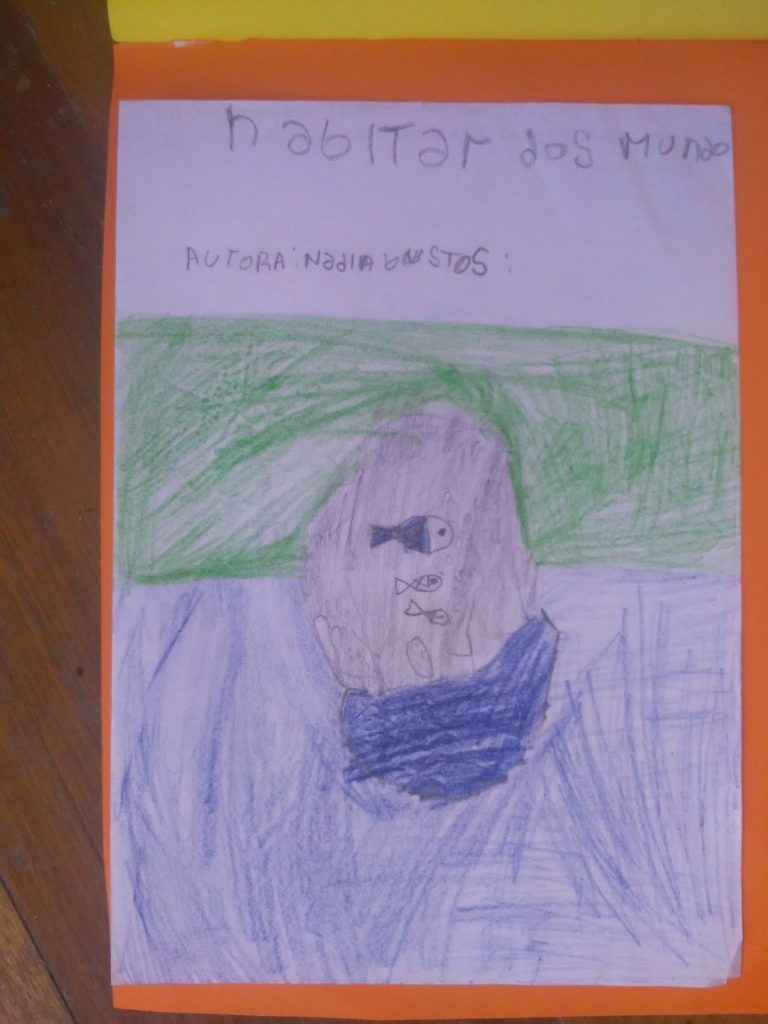
Habitar dos mundos.
Autora: Nadia Bustos 10 años
Si te interesó el taller de Vuelo Poético, podés bajar la propuesta en PDF haciendo click aquí.
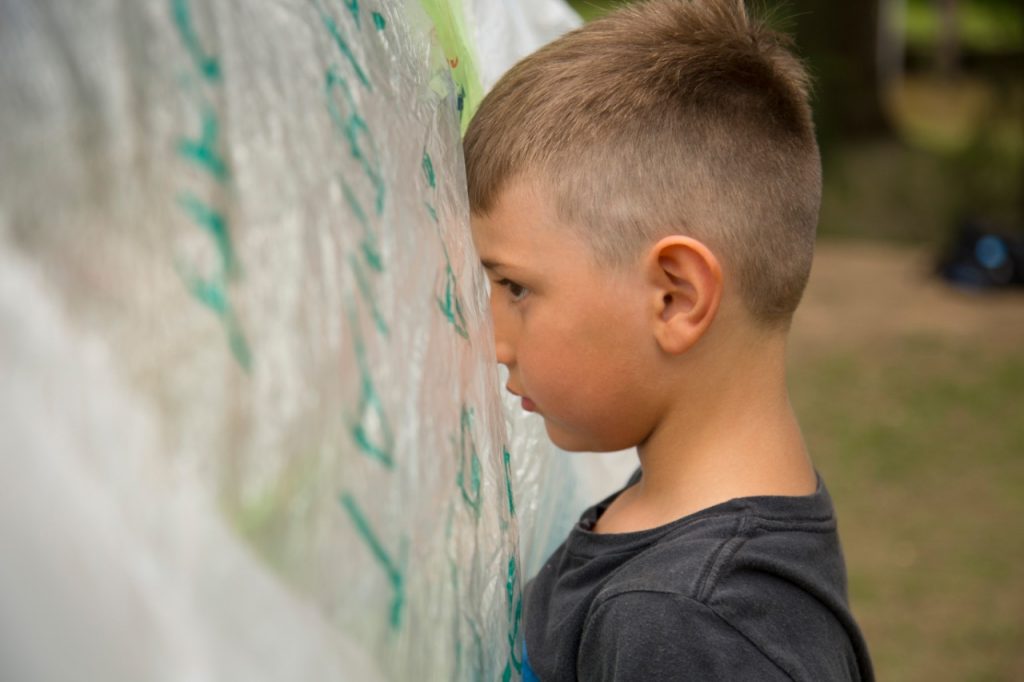
Alrededor del mediodía comenzamos a inflar el Museo Aero solar creado por los científicos de IBYME, lo que generó momentos de gran alboroto y algarabía principalmente entre los más pequeños.
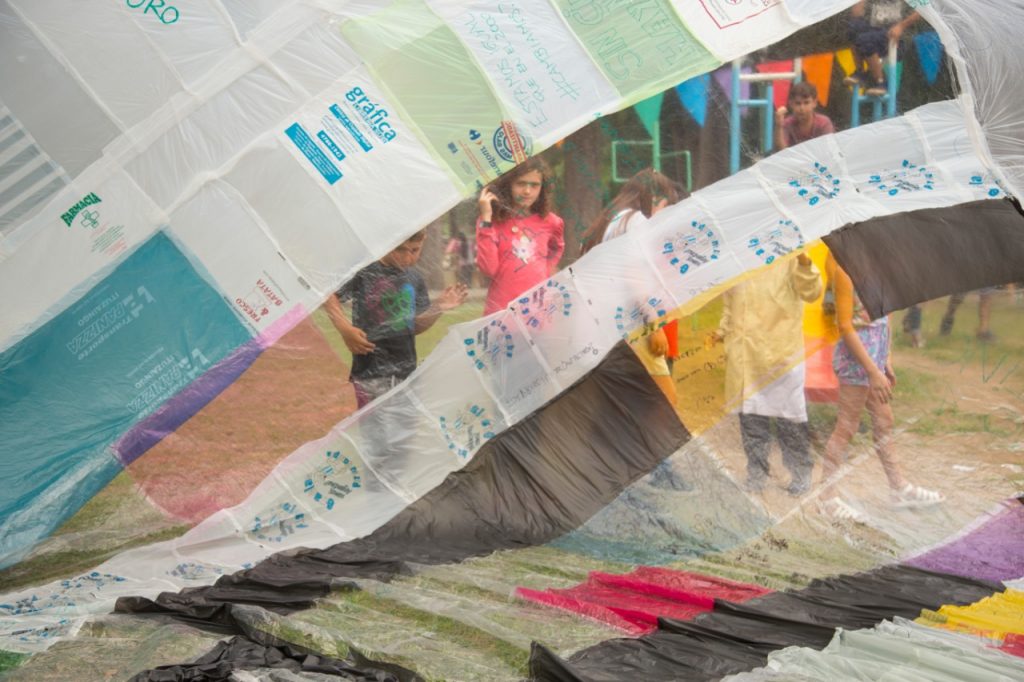
Finalmente, todos fueron embarcando una vez más para luego despedirnos desde las lanchas hasta la próxima…
Participaron los siguientes miembros de la comunidad de Aerocene en Argentina:
Camille Valenzuela
Gabriela Sorbi
Amalia Boselli
Guadalupe Boado
Maxi Laina
Olivia Laina
Mirko Laina
Joaquín Ezcurra
Aerocene in Ansenuza – An interspecies aero attunement
Aerocene community proposed to develop some specific actions in Ansenuza. The focus was the study and observation of birds and strengthening Ansenuza environment as a continental sanctuary for migration birds.
Continue reading